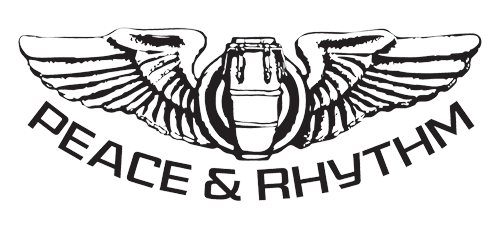News & Updates
Please note: this page is here for archival purposes only and is no longer being updated.
[
{
"id": "joey-ramone-may-19-1951-april-15-2001",
"data": {
"title": "Joey Ramone / May 19, 1951 - April 15, 2001",
"slug": "joey-ramone-may-19-1951-april-15-2001",
"date": "2017-05-19T00:00:00.000Z"
},
"body": "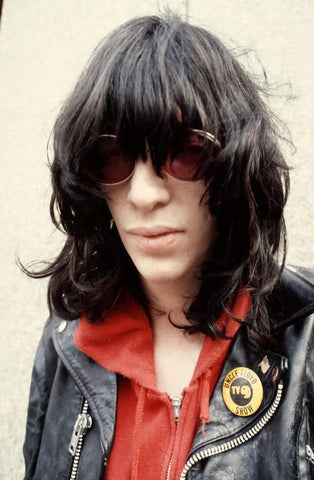\n\nToday is the birthday of Jeffrey Hyman aka **Joey Ramone** , front man of The Ramones and pop-punk idol. He came out of Forest Hills, Queens with his love of '60s rock, girl groups and glam and joined Sniper in the early '70s playing shows with groups like the NY Dolls and Suicide.\n\nIn '74 he formed the Ramones (the name a reference to a Paul McCartney pseudonym). Joey was originally the drummer of the band, but being an excellent self-taught singer it wasn't long before he was the frontman to one of the best punk bands in the world for the next twenty years.\n\nIn '85 he participated in the Artists United Against Apartheid project _Sun City_ and has also guested with Youth Gone Mad, Helen Love and Diné-Navajo rock band Blackfire. Other projects included managing horror-punk band The Independents and he produced Ronnie Spector's _She Talks To Rainbows_ album. He died at 49, but not before becoming a NYC rock icon!",
"filePath": "content/posts/joey-ramone-may-19-1951-april-15-2001.md",
"digest": "1c0c97e158dfbb1c",
"rendered": {
"html": "<p><img src=\"/images/50770bda9ba99e4601045f94b9c27209_large.jpg\" alt=\"\"></p>\n<p>Today is the birthday of Jeffrey Hyman aka <strong>Joey Ramone</strong> , front man of The Ramones and pop-punk idol. He came out of Forest Hills, Queens with his love of ’60s rock, girl groups and glam and joined Sniper in the early ’70s playing shows with groups like the NY Dolls and Suicide.</p>\n<p>In ‘74 he formed the Ramones (the name a reference to a Paul McCartney pseudonym). Joey was originally the drummer of the band, but being an excellent self-taught singer it wasn’t long before he was the frontman to one of the best punk bands in the world for the next twenty years.</p>\n<p>In ‘85 he participated in the Artists United Against Apartheid project <em>Sun City</em> and has also guested with Youth Gone Mad, Helen Love and Diné-Navajo rock band Blackfire. Other projects included managing horror-punk band The Independents and he produced Ronnie Spector’s <em>She Talks To Rainbows</em> album. He died at 49, but not before becoming a NYC rock icon!</p>",
"metadata": {
"headings": [],
"localImagePaths": [],
"remoteImagePaths": [],
"frontmatter": {
"web-scraper-order": "1746561682-298",
"web-scraper-start-url": "https://peaceandrhythm.com",
"title": "Joey Ramone / May 19, 1951 - April 15, 2001",
"pagination": "https://www.peaceandrhythm.com/?page=53",
"date": "May 19, 2017",
"post": "Joey Ramone / May 19, 1951 - April 15, 2001",
"post-href": "https://www.peaceandrhythm.com/blogs/news/joey-ramone-may-19-1951-april-15-2001",
"slug": "joey-ramone-may-19-1951-april-15-2001"
},
"imagePaths": []
}
},
"collection": "blog"
},
{
"id": "big-joe-turner-may-18-1911-nov-24-1985",
"data": {
"title": "Big Joe Turner / May 18, 1911 - Nov 24, 1985",
"slug": "big-joe-turner-may-18-1911-nov-24-1985",
"date": "2017-05-18T00:00:00.000Z"
},
"body": "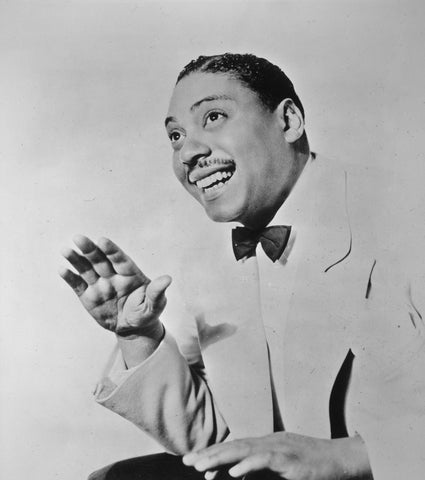\n\nThe Boss of the Blues, **Big Joe Turner** was one of the strongest voices one could ever hear. A great blues shouter, he could be heard and felt unamplified over the brass and beat. A Kansas City icon, he got his start as a singing bartender before ripping up that city's famed music scene, singing in jazz big bands and with boogie-woogie pianists, such as his successful partnership with Pete Johnson.\n\nHe started making appearances in NYC in the mid '30s and recorded sessions all over the country. In the '40s he spent some time in LA singing on/for films as well as with the Duke Ellington Revue. He signed to the fledgling Atlantic label in '51 and his biggest record for them, \"Shake, Rattle & Roll\", helped set up the rock & roll phenomenon. It's cover version by Bill Haley was the \"clean\" one with Turner's OG version being a jukebox favorite.\n\nIn the '60s & '70s he went back to recording blues & jazz. He sang from the '20s into the '80s and covered boogie woogie, jump blues, R&B, rock & roll, jazz and risque material and worked with trumpeter Hot Lips Page, Meade Lux Lewis, Art Tatum, Willie \"The Lion\" Smith, Wynonie Harris, Elmore James, Count Basie, Dizzy Gillespie, Roomful of Blues and even with Bill Haley & the Comets! His other big tunes included \"Roll 'Em Pete\", \"Cherry Red\", \"Honey Hush\", \"Corrine Corrina\".",
"filePath": "content/posts/big-joe-turner-may-18-1911-nov-24-1985.md",
"digest": "f9bbc61d88228364",
"rendered": {
"html": "<p><img src=\"/images/4796-050-8DE8F353_large.jpg\" alt=\"\"></p>\n<p>The Boss of the Blues, <strong>Big Joe Turner</strong> was one of the strongest voices one could ever hear. A great blues shouter, he could be heard and felt unamplified over the brass and beat. A Kansas City icon, he got his start as a singing bartender before ripping up that city’s famed music scene, singing in jazz big bands and with boogie-woogie pianists, such as his successful partnership with Pete Johnson.</p>\n<p>He started making appearances in NYC in the mid ’30s and recorded sessions all over the country. In the ’40s he spent some time in LA singing on/for films as well as with the Duke Ellington Revue. He signed to the fledgling Atlantic label in ‘51 and his biggest record for them, “Shake, Rattle & Roll”, helped set up the rock & roll phenomenon. It’s cover version by Bill Haley was the “clean” one with Turner’s OG version being a jukebox favorite.</p>\n<p>In the ’60s & ’70s he went back to recording blues & jazz. He sang from the ’20s into the ’80s and covered boogie woogie, jump blues, R&B, rock & roll, jazz and risque material and worked with trumpeter Hot Lips Page, Meade Lux Lewis, Art Tatum, Willie “The Lion” Smith, Wynonie Harris, Elmore James, Count Basie, Dizzy Gillespie, Roomful of Blues and even with Bill Haley & the Comets! His other big tunes included “Roll ‘Em Pete”, “Cherry Red”, “Honey Hush”, “Corrine Corrina”.</p>",
"metadata": {
"headings": [],
"localImagePaths": [],
"remoteImagePaths": [],
"frontmatter": {
"web-scraper-order": "1746561680-297",
"web-scraper-start-url": "https://peaceandrhythm.com",
"title": "Big Joe Turner / May 18, 1911 - Nov 24, 1985",
"pagination": "https://www.peaceandrhythm.com/?page=53",
"date": "May 18, 2017",
"post": "Big Joe Turner / May 18, 1911 - Nov 24, 1985",
"post-href": "https://www.peaceandrhythm.com/blogs/news/big-joe-turner-may-18-1911-nov-24-1985",
"slug": "big-joe-turner-may-18-1911-nov-24-1985"
},
"imagePaths": []
}
},
"collection": "blog"
},
{
"id": "dewey-redman-may-17-1931-sept-2-2006",
"data": {
"title": "Dewey Redman / May 17, 1931 - Sept 2, 2006",
"slug": "dewey-redman-may-17-1931-sept-2-2006",
"date": "2017-05-17T00:00:00.000Z"
},
"body": "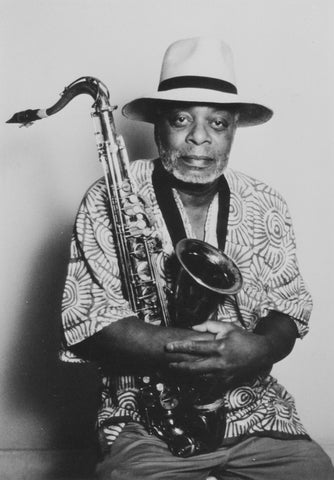\n\nGreat Texan saxophonist **Dewey Redman** is best known for his work with Ornette Coleman, the great \"Birth\" band (as I call it, after one of their great records) with Keith Jarrett, Old & New Dreams and his own fine output on Impulse!, Freedom, Actuel, ECM, Black Saint and others. He was self-taught and didn't lead a band until he was in his 30s.\n\nHe was the nephew of famed pioneering swing jazz hornsmen/arranger Don Redman (known for his work with Fletcher Henderson and others). Dewey started as a kid on clarinet, playing in a church band, before picking up the sax. He came out of that same Fort Worth high school that brought us Ornette, King Curtis, Prince Lasha, Charles Moffett, Ronald Shannon Jackson and others. In fact, Redman was classmate to a few of them. After college and an Army stint in the late '50s he was in San Francisco, playing with young Pharoah Sanders and Donald Rafael Garrett. He toured across to the country in the early-to-mid-'60s, ending up in NYC.\n\nIn the '60s and '70s he collaborated with old high school pal Ornette, contributing to _New York Is Now_ , _Science Fiction_ , _Crisis_ , _Love Call_ and others. He also later became a member of the Coleman-inspired group Old & New Dreams, with Don Cherry, Ed Blackwell and Charlie Haden, recording four excellent albums for ECM in the '70s & '80s. The earlier-mentioned Jarrett band (with Haden and Paul Motian) ran off a string of albums that stand among all the musician's best work. He also played with Pat Metheny, Jane Bunnett, LeRoy Jenkins, Tom Harrell, Steve Turre, Haden's Liberation Music Orchestra and others, as well as with his son, well-known saxophonist Joshua Redman. His late-career classic was a trio with Cecil Taylor and Elvin Jones (_Momentum Space_ , Verve '99).\n\nHe played tenor and musette, along with some alto and clarinet. You could often hear his humming effect and his use of the musette adds an \"exotic\" sound to his palette. His rough and bluesy tenor playing was a recognizable style within the '60s and '70s avant-garde of jazz.",
"filePath": "content/posts/dewey-redman-may-17-1931-sept-2-2006.md",
"digest": "66a0e1c59b976ed5",
"rendered": {
"html": "<p><img src=\"/images/Redman_Dewey_1r_large.jpg\" alt=\"\"></p>\n<p>Great Texan saxophonist <strong>Dewey Redman</strong> is best known for his work with Ornette Coleman, the great “Birth” band (as I call it, after one of their great records) with Keith Jarrett, Old & New Dreams and his own fine output on Impulse!, Freedom, Actuel, ECM, Black Saint and others. He was self-taught and didn’t lead a band until he was in his 30s.</p>\n<p>He was the nephew of famed pioneering swing jazz hornsmen/arranger Don Redman (known for his work with Fletcher Henderson and others). Dewey started as a kid on clarinet, playing in a church band, before picking up the sax. He came out of that same Fort Worth high school that brought us Ornette, King Curtis, Prince Lasha, Charles Moffett, Ronald Shannon Jackson and others. In fact, Redman was classmate to a few of them. After college and an Army stint in the late ’50s he was in San Francisco, playing with young Pharoah Sanders and Donald Rafael Garrett. He toured across to the country in the early-to-mid-’60s, ending up in NYC.</p>\n<p>In the ’60s and ’70s he collaborated with old high school pal Ornette, contributing to <em>New York Is Now</em> , <em>Science Fiction</em> , <em>Crisis</em> , <em>Love Call</em> and others. He also later became a member of the Coleman-inspired group Old & New Dreams, with Don Cherry, Ed Blackwell and Charlie Haden, recording four excellent albums for ECM in the ’70s & ’80s. The earlier-mentioned Jarrett band (with Haden and Paul Motian) ran off a string of albums that stand among all the musician’s best work. He also played with Pat Metheny, Jane Bunnett, LeRoy Jenkins, Tom Harrell, Steve Turre, Haden’s Liberation Music Orchestra and others, as well as with his son, well-known saxophonist Joshua Redman. His late-career classic was a trio with Cecil Taylor and Elvin Jones (<em>Momentum Space</em> , Verve ‘99).</p>\n<p>He played tenor and musette, along with some alto and clarinet. You could often hear his humming effect and his use of the musette adds an “exotic” sound to his palette. His rough and bluesy tenor playing was a recognizable style within the ’60s and ’70s avant-garde of jazz.</p>",
"metadata": {
"headings": [],
"localImagePaths": [],
"remoteImagePaths": [],
"frontmatter": {
"web-scraper-order": "1746561675-295",
"web-scraper-start-url": "https://peaceandrhythm.com",
"title": "Dewey Redman / May 17, 1931 - Sept 2, 2006",
"pagination": "https://www.peaceandrhythm.com/?page=53",
"date": "May 17, 2017",
"post": "Dewey Redman / May 17, 1931 - Sept 2, 2006",
"post-href": "https://www.peaceandrhythm.com/blogs/news/dewey-redman-may-17-1931-sept-2-2006",
"slug": "dewey-redman-may-17-1931-sept-2-2006"
},
"imagePaths": []
}
},
"collection": "blog"
},
{
"id": "jackie-mclean-may-17-1931-march-31-2006",
"data": {
"title": "Jackie McLean / May 17, 1931 - March 31, 2006",
"slug": "jackie-mclean-may-17-1931-march-31-2006",
"date": "2017-05-17T00:00:00.000Z"
},
"body": "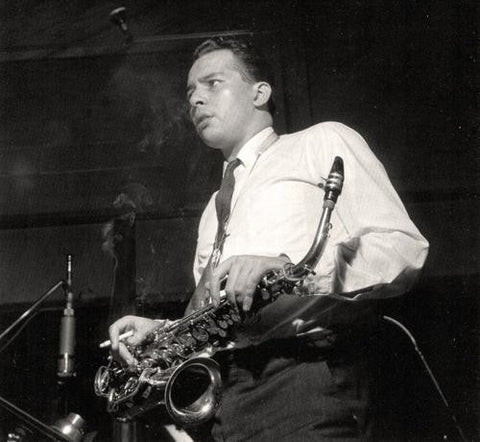\n\nAlto saxophonist, educator and activist **Jackie McLean** had a long career of quality hard-bop and post-bop jazz. He also played in modal settings and his alto sound could be as commanding as a tenor at times. His run on Prestige and Blue Note in the '50s and '60s is as classic as any of the hard bop era. He also made several appearances on albums by other Blue Note artists.\n\nFrom NYC, his father was a professional guitarist with Tiny Bradshaw but he passed away while Jackie was a child. He soaked up the bebop scene, hanging with Charlie Parker, Thelonious Monk and Bud Powell as a kid as they were in his neighborhood. In high school he was in a band with Sonny Rollins and Kenny Drew. He made his recording debut on Miles Davis' 1951 album _Dig_.\n\nHe played with Gene Ammons and Charles Mingus in his early career. After a violent altercation with Mingus he joined Art Blakey's Jazz Messengers. His prolific period ran from '55 to about '67 and he recorded several classics: _Let Freedom Ring_ , _Old & New Gospel _(featuring Ornette Coleman), _Swing Swang Swingin'_ , _Right Now!_ , _Destination Out_ , _Jackknife_ , _'Bout Soul_ and others. He also recorded with Lee Morgan, Donald Byrd, McCoy Tyner and others. He also appeared in both the stage and film versions of Jack Gelber's _The Connection_ , playing a junky jazz musician (something he knew much about in his early days) trying to score. Shirley Clarke's 1961 film is an underground classic.\n\nOn the Hartford scene as an educator for the last portion of his life, he was head of Afro-Am studies at Univ. of Hartford since '68 and was a cultural activist in the community. He rarely recorded after the '70s. Noted reedsman René McLean is his step-son.",
"filePath": "content/posts/jackie-mclean-may-17-1931-march-31-2006.md",
"digest": "82bc1a0a30026d92",
"rendered": {
"html": "<p><img src=\"/images/jackie-mclean_large.jpg\" alt=\"\"></p>\n<p>Alto saxophonist, educator and activist <strong>Jackie McLean</strong> had a long career of quality hard-bop and post-bop jazz. He also played in modal settings and his alto sound could be as commanding as a tenor at times. His run on Prestige and Blue Note in the ’50s and ’60s is as classic as any of the hard bop era. He also made several appearances on albums by other Blue Note artists.</p>\n<p>From NYC, his father was a professional guitarist with Tiny Bradshaw but he passed away while Jackie was a child. He soaked up the bebop scene, hanging with Charlie Parker, Thelonious Monk and Bud Powell as a kid as they were in his neighborhood. In high school he was in a band with Sonny Rollins and Kenny Drew. He made his recording debut on Miles Davis’ 1951 album <em>Dig</em>.</p>\n<p>He played with Gene Ammons and Charles Mingus in his early career. After a violent altercation with Mingus he joined Art Blakey’s Jazz Messengers. His prolific period ran from ‘55 to about ‘67 and he recorded several classics: <em>Let Freedom Ring</em> , _Old & New Gospel _(featuring Ornette Coleman), <em>Swing Swang Swingin’</em> , <em>Right Now!</em> , <em>Destination Out</em> , <em>Jackknife</em> , <em>‘Bout Soul</em> and others. He also recorded with Lee Morgan, Donald Byrd, McCoy Tyner and others. He also appeared in both the stage and film versions of Jack Gelber’s <em>The Connection</em> , playing a junky jazz musician (something he knew much about in his early days) trying to score. Shirley Clarke’s 1961 film is an underground classic.</p>\n<p>On the Hartford scene as an educator for the last portion of his life, he was head of Afro-Am studies at Univ. of Hartford since ‘68 and was a cultural activist in the community. He rarely recorded after the ’70s. Noted reedsman René McLean is his step-son.</p>",
"metadata": {
"headings": [],
"localImagePaths": [],
"remoteImagePaths": [],
"frontmatter": {
"web-scraper-order": "1746561678-296",
"web-scraper-start-url": "https://peaceandrhythm.com",
"title": "Jackie McLean / May 17, 1931 - March 31, 2006",
"pagination": "https://www.peaceandrhythm.com/?page=53",
"date": "May 17, 2017",
"post": "Jackie McLean / May 17, 1931 - March 31, 2006",
"post-href": "https://www.peaceandrhythm.com/blogs/news/jackie-mclean-may-17-1931-march-31-2006",
"slug": "jackie-mclean-may-17-1931-march-31-2006"
},
"imagePaths": []
}
},
"collection": "blog"
},
{
"id": "betty-carter-may-16-1929-sept-26-1998",
"data": {
"title": "Betty Carter / May 16, 1929 - Sept 26, 1998",
"slug": "betty-carter-may-16-1929-sept-26-1998",
"date": "2017-05-16T00:00:00.000Z"
},
"body": "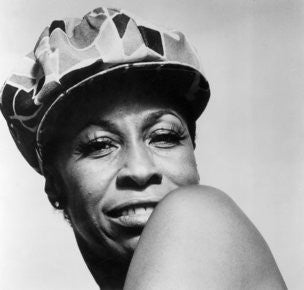\n\nOne of the most inventive vocal stylists in all of jazz, **Betty Carter** not only brought a gift for radical improvisation, a \"breathy\" artful style at times and a hip scatting flow, but she also brought an independent spirit with her own Bet-Car record label, where she sold albums direct to fans and stores out of the trunk of her car.\n\nShe grew up in Detroit and was singing in the nightclubs as a teenager, due to possessing a fake ID. Early experience with Dizzy Gillespie was a huge influence on her, as well as early encounters with Charlie Parker, Miles Davis and Max Roach. At 19 she joined Lionel Hampton's band (the same unit that Charles Mingus was a member of at the time). In the early '50s she found herself based in NYC and touring a lot in the South. She toured with Miles, recorded duos with King Pleasure and sang at The Apollo.\n\nAfter that successful boost she was well on her way to a recording career of her own star. She famously sang with the Ray Charles band, cutting duet sides with him and went to Japan with Sonny Rollins in '63. A natural musical visionary, she was often outspoken toward bandleaders about how she thought the music should be. In fact, she refused to sing pop music, which kept her visibility down a bit in the late '60s.\n\nFrustrated with music industry games, she started her own label in '69 and focused on booking herself at colleges. (She had always took an interest in teaching jazz history and mentoring younger musicians). The '70s saw her touring all over the Americas and Europe and she even appeared as musical guest on _Saturday Night Live_. Her profile was as high as ever in the '80s when she hooked up with Verve, who released new material and reissued Bet-Car albums onto CD.\n\nShe has been the subject of two documentaries: a 1980 flick _But Then, She's Betty Carter_ and a '94 film _Betty Carter: New All The Time_. She had become a big-ticket act by the time of her passing from cancer and with that the world lost one of its major singers, a vocalist who used her voice as if it were a horn, an interpreter who retold stories in song into her own, a woman with fierce dedication to her craft, an artist who refused to slum to commercial tricks and a great who held a reputation as a commanding live performer.",
"filePath": "content/posts/betty-carter-may-16-1929-sept-26-1998.md",
"digest": "c225e1a41772528d",
"rendered": {
"html": "<p><img src=\"/images/betty-carter1_large.jpg\" alt=\"\"></p>\n<p>One of the most inventive vocal stylists in all of jazz, <strong>Betty Carter</strong> not only brought a gift for radical improvisation, a “breathy” artful style at times and a hip scatting flow, but she also brought an independent spirit with her own Bet-Car record label, where she sold albums direct to fans and stores out of the trunk of her car.</p>\n<p>She grew up in Detroit and was singing in the nightclubs as a teenager, due to possessing a fake ID. Early experience with Dizzy Gillespie was a huge influence on her, as well as early encounters with Charlie Parker, Miles Davis and Max Roach. At 19 she joined Lionel Hampton’s band (the same unit that Charles Mingus was a member of at the time). In the early ’50s she found herself based in NYC and touring a lot in the South. She toured with Miles, recorded duos with King Pleasure and sang at The Apollo.</p>\n<p>After that successful boost she was well on her way to a recording career of her own star. She famously sang with the Ray Charles band, cutting duet sides with him and went to Japan with Sonny Rollins in ‘63. A natural musical visionary, she was often outspoken toward bandleaders about how she thought the music should be. In fact, she refused to sing pop music, which kept her visibility down a bit in the late ’60s.</p>\n<p>Frustrated with music industry games, she started her own label in ‘69 and focused on booking herself at colleges. (She had always took an interest in teaching jazz history and mentoring younger musicians). The ’70s saw her touring all over the Americas and Europe and she even appeared as musical guest on <em>Saturday Night Live</em>. Her profile was as high as ever in the ’80s when she hooked up with Verve, who released new material and reissued Bet-Car albums onto CD.</p>\n<p>She has been the subject of two documentaries: a 1980 flick <em>But Then, She’s Betty Carter</em> and a ‘94 film <em>Betty Carter: New All The Time</em>. She had become a big-ticket act by the time of her passing from cancer and with that the world lost one of its major singers, a vocalist who used her voice as if it were a horn, an interpreter who retold stories in song into her own, a woman with fierce dedication to her craft, an artist who refused to slum to commercial tricks and a great who held a reputation as a commanding live performer.</p>",
"metadata": {
"headings": [],
"localImagePaths": [],
"remoteImagePaths": [],
"frontmatter": {
"web-scraper-order": "1746561672-294",
"web-scraper-start-url": "https://peaceandrhythm.com",
"title": "Betty Carter / May 16, 1929 - Sept 26, 1998",
"pagination": "https://www.peaceandrhythm.com/?page=53",
"date": "May 16, 2017",
"post": "Betty Carter / May 16, 1929 - Sept 26, 1998",
"post-href": "https://www.peaceandrhythm.com/blogs/news/betty-carter-may-16-1929-sept-26-1998",
"slug": "betty-carter-may-16-1929-sept-26-1998"
},
"imagePaths": []
}
},
"collection": "blog"
},
{
"id": "jack-bruce-may-14-1943-oct-25-2014",
"data": {
"title": "Jack Bruce / May 14, 1943 - Oct 25, 2014",
"slug": "jack-bruce-may-14-1943-oct-25-2014",
"date": "2017-05-14T00:00:00.000Z"
},
"body": "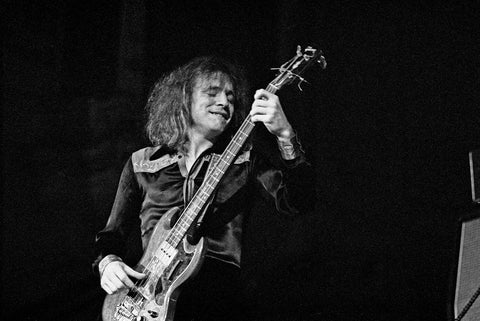\n\nPerhaps best known to casuals as the bassist of Cream, the Scottish virtuoso **Jack Bruce** in fact had a long and varied career that included rock, blues, jazz, classical, third stream, Latin, world music and fusion. He could play electric & upright bass, cello, piano, harmonica and was a singer/songwriter as well.\n\nGrowing up listening to jazz, he studied classical cello and was kicked out of music school for playing jazz on the side. In the early '60s he toured Europe in a big band and joined the legendary Blues Incorporated in '62, which splintered off into the Graham Bond Organisation. These groups included future Cream drummer Ginger Baker but they both hated each other and Bruce quit in '65. After a quickie solo EP for Polydor (and Bruce's rejection on an offer to join Marvin Gaye's band!) he joined up with John Mayall's Bluesbreakers, of which Eric Clapton was a member of.\n\nIn '66 he found himself playing with Manfred Mann. On the side of that, Bruce and Clapton teamed up in Powerhouse, containing early versions of songs that Cream would play (\"Crossroads\" and \"Steppin' Out\"). In July of '66 the three geniuses formed Cream and proceeded to slay for less than three years, influencing a million bands.\n\nThe late '60s found him recording with The Scaffolds and playing free jazz and fusion. He joined Tony Williams' Lifetime until the band's break-up in '71. Following that he formed the hard blues rock trio West, Bruce & Laing with members of Mountain. The rest of the '70s saw more solo albums and tours, as well as work with Frank Zappa, Lou Reed, Carla Bley's _Escalator Over The Hill_ , Mahavishnu Orchestra, Rocket 88 and others.\n\nAfter some drug rehab in 1980 he worked with Ringo Starr, Charlie Watts, Soft Machine, Robin Trower and a particularly good run with Kip Hanrahan. The '90s saw him getting back with Baker at times and collaborating with Billy Cobham, Golden Palominos, Bernie Worrell & Vernon Reid, John Medeski, Horacio \"El Negro\", Michael Schenker and others. He had a liver transplant in 2003 and in 2005 Cream held reunion concerts. He attained recognition as one of the greatest bass players the world has seen, in a long career before his death in 2014. His children, Malcolm Bruce, Aruba Red and the late Jonas Bruce are/were also musicians.",
"filePath": "content/posts/jack-bruce-may-14-1943-oct-25-2014.md",
"digest": "e89af62389472c9f",
"rendered": {
"html": "<p><img src=\"/images/jack-bruce-with-cream_large.jpg\" alt=\"\"></p>\n<p>Perhaps best known to casuals as the bassist of Cream, the Scottish virtuoso <strong>Jack Bruce</strong> in fact had a long and varied career that included rock, blues, jazz, classical, third stream, Latin, world music and fusion. He could play electric & upright bass, cello, piano, harmonica and was a singer/songwriter as well.</p>\n<p>Growing up listening to jazz, he studied classical cello and was kicked out of music school for playing jazz on the side. In the early ’60s he toured Europe in a big band and joined the legendary Blues Incorporated in ‘62, which splintered off into the Graham Bond Organisation. These groups included future Cream drummer Ginger Baker but they both hated each other and Bruce quit in ‘65. After a quickie solo EP for Polydor (and Bruce’s rejection on an offer to join Marvin Gaye’s band!) he joined up with John Mayall’s Bluesbreakers, of which Eric Clapton was a member of.</p>\n<p>In ‘66 he found himself playing with Manfred Mann. On the side of that, Bruce and Clapton teamed up in Powerhouse, containing early versions of songs that Cream would play (“Crossroads” and “Steppin’ Out”). In July of ‘66 the three geniuses formed Cream and proceeded to slay for less than three years, influencing a million bands.</p>\n<p>The late ’60s found him recording with The Scaffolds and playing free jazz and fusion. He joined Tony Williams’ Lifetime until the band’s break-up in ‘71. Following that he formed the hard blues rock trio West, Bruce & Laing with members of Mountain. The rest of the ’70s saw more solo albums and tours, as well as work with Frank Zappa, Lou Reed, Carla Bley’s <em>Escalator Over The Hill</em> , Mahavishnu Orchestra, Rocket 88 and others.</p>\n<p>After some drug rehab in 1980 he worked with Ringo Starr, Charlie Watts, Soft Machine, Robin Trower and a particularly good run with Kip Hanrahan. The ’90s saw him getting back with Baker at times and collaborating with Billy Cobham, Golden Palominos, Bernie Worrell & Vernon Reid, John Medeski, Horacio “El Negro”, Michael Schenker and others. He had a liver transplant in 2003 and in 2005 Cream held reunion concerts. He attained recognition as one of the greatest bass players the world has seen, in a long career before his death in 2014. His children, Malcolm Bruce, Aruba Red and the late Jonas Bruce are/were also musicians.</p>",
"metadata": {
"headings": [],
"localImagePaths": [],
"remoteImagePaths": [],
"frontmatter": {
"web-scraper-order": "1746561668-292",
"web-scraper-start-url": "https://peaceandrhythm.com",
"title": "Jack Bruce / May 14, 1943 - Oct 25, 2014",
"pagination": "https://www.peaceandrhythm.com/?page=54",
"date": "May 14, 2017",
"post": "Jack Bruce / May 14, 1943 - Oct 25, 2014",
"post-href": "https://www.peaceandrhythm.com/blogs/news/jack-bruce-may-14-1943-oct-25-2014",
"slug": "jack-bruce-may-14-1943-oct-25-2014"
},
"imagePaths": []
}
},
"collection": "blog"
},
{
"id": "sidney-bechet-may-14-1897-may-14-1959",
"data": {
"title": "Sidney Bechet / May 14, 1897 - May 14, 1959",
"slug": "sidney-bechet-may-14-1897-may-14-1959",
"date": "2017-05-14T00:00:00.000Z"
},
"body": "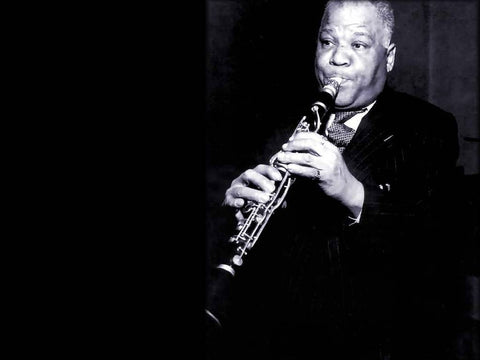\n\nOne of the early solo stylists of jazz, **Sidney Bechet** ripped it up in his native New Orleans, marching in parade bands, playing parties and as clarinetist with the Eagle Band and others before joining King Oliver's band in 1913. That band did some heavy touring, including a residency in Chicago. In 1919 he joined the Syncopated Orchestra in NYC and that band went to Europe and became a sensation, even attracting positive attention from the classical music world.\n\nIn London he started playing the soprano saxophone and became the early standard on that instrument (greatly influencing John Coltrane). His heavy touring of Europe brought him as far as Russia on a few occasions. He made his earliest recordings in '23 and continued to tour Europe and the USA. His 1932 sides with his New Orleans Feetwarmers are considered amongst his best sessions ever. But his sound never strayed too far from its roots and he found it difficult keeping up with the changing trends in the States, where he resided for much of the '30s & '40s. At one point he owned a tailor's shop which doubled as a jam spot.\n\nHe decided at the end of the '40s to relocate permanently to France, where he became an ever bigger star than before and an icon. His music covered jazz, classical, merengue, rumba, pop and Haitian musics and he collaborated through the years with Louis Armstrong, Noble Sissle, Willie \"The Lion\" Smith, toured with Josephine Baker, and even did a brief stint in the Duke Ellington band (and served as a teacher to Johnny Hodges). His recordings often suffer from rough sound quality but the jams are always hot!\n\nCheck out his early overdubbing experiment from 1941 on \"The Sheikh of Araby\", where he played all the instruments himself, effectively functioning as a one-man band. He died on his 67th birthday.",
"filePath": "content/posts/sidney-bechet-may-14-1897-may-14-1959.md",
"digest": "23af2e2135c8ce1d",
"rendered": {
"html": "<p><img src=\"/images/jazz_csg_054_sidney_bechet1_large.jpg\" alt=\"\"></p>\n<p>One of the early solo stylists of jazz, <strong>Sidney Bechet</strong> ripped it up in his native New Orleans, marching in parade bands, playing parties and as clarinetist with the Eagle Band and others before joining King Oliver’s band in 1913. That band did some heavy touring, including a residency in Chicago. In 1919 he joined the Syncopated Orchestra in NYC and that band went to Europe and became a sensation, even attracting positive attention from the classical music world.</p>\n<p>In London he started playing the soprano saxophone and became the early standard on that instrument (greatly influencing John Coltrane). His heavy touring of Europe brought him as far as Russia on a few occasions. He made his earliest recordings in ‘23 and continued to tour Europe and the USA. His 1932 sides with his New Orleans Feetwarmers are considered amongst his best sessions ever. But his sound never strayed too far from its roots and he found it difficult keeping up with the changing trends in the States, where he resided for much of the ’30s & ’40s. At one point he owned a tailor’s shop which doubled as a jam spot.</p>\n<p>He decided at the end of the ’40s to relocate permanently to France, where he became an ever bigger star than before and an icon. His music covered jazz, classical, merengue, rumba, pop and Haitian musics and he collaborated through the years with Louis Armstrong, Noble Sissle, Willie “The Lion” Smith, toured with Josephine Baker, and even did a brief stint in the Duke Ellington band (and served as a teacher to Johnny Hodges). His recordings often suffer from rough sound quality but the jams are always hot!</p>\n<p>Check out his early overdubbing experiment from 1941 on “The Sheikh of Araby”, where he played all the instruments himself, effectively functioning as a one-man band. He died on his 67th birthday.</p>",
"metadata": {
"headings": [],
"localImagePaths": [],
"remoteImagePaths": [],
"frontmatter": {
"web-scraper-order": "1746561670-293",
"web-scraper-start-url": "https://peaceandrhythm.com",
"title": "Sidney Bechet / May 14, 1897 - May 14, 1959",
"pagination": "https://www.peaceandrhythm.com/?page=54",
"date": "May 14, 2017",
"post": "Sidney Bechet / May 14, 1897 - May 14, 1959",
"post-href": "https://www.peaceandrhythm.com/blogs/news/sidney-bechet-may-14-1897-may-14-1959",
"slug": "sidney-bechet-may-14-1897-may-14-1959"
},
"imagePaths": []
}
},
"collection": "blog"
},
{
"id": "chuck-schuldiner-may-13-1967-dec-13-2001",
"data": {
"title": "Chuck Schuldiner / May 13, 1967 - Dec 13, 2001",
"slug": "chuck-schuldiner-may-13-1967-dec-13-2001",
"date": "2017-05-13T00:00:00.000Z"
},
"body": "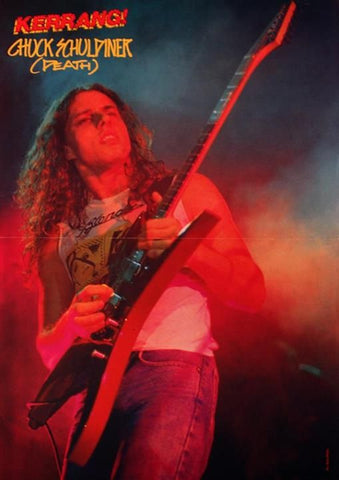\n\nThis one is not going to be up the alley of most people but since it's my project to write these little bios of some musical icons I am feeling no shame to include the Father of Death Metal, the late **Chuck Schuldiner**.\n\nWhile I completely understand that death metal is not to everybody's liking, I am disgusted with the proclamations about it being \"shit music\" or that these bands glorify negativity. As far as the former, death metal is in my opinion some of the BEST rock music ever made. Bands like [Atheist](https://www.youtube.com/watch?v=DnUZ5xpcKHw), Cynic, Sadus and Chuck's band Death are HEAVILY influenced by jazz and the musicianship in these bands is incredible, albeit high-velocity and extreme. The truth is that these bands can play circles around every piece-of-shit rock band out there. As far as the lyrical imagery, the best of these bands range from horror-movie kind of non-serious stuff to well-constructed verses on a variety of social and philosophical matters.\n\nA jazz fan from the beginning, Schuldiner formed his band Death in Tampa as a teen in 1983. He spent some time in both Toronto and San Francisco before solidifying the concept back in Tampa, the city in which the genre would come to be associated with. (In fact, there are death metal bands on the island of Cuba after hearing the music on the radio transmitting from Florida).\n\nUtilizing various studio and live musicians he proceeded to create the most extreme metal band of its time, and not for the lack of a still-growing international popularity. Death's 1991 album _Human_ set new standards of extreme progressive-rock and left every metal band in the (burnt corpse) dust.\n\nSchuldiner died from a tumor in 2001, removing one of the most important figures in heavy metal from the scene. Death still stands as the pinnacle of the genre of death metal, in much the same way that Public Enemy is the pinnacle of rap or the Bad Brains with hardcore. In fact, the genre lives on with the name he gave it.",
"filePath": "content/posts/chuck-schuldiner-may-13-1967-dec-13-2001.md",
"digest": "6b22d631a2d99aeb",
"rendered": {
"html": "<p><img src=\"/images/9c5452028235118153d4753fec1b15a2_large.jpg\" alt=\"\"></p>\n<p>This one is not going to be up the alley of most people but since it’s my project to write these little bios of some musical icons I am feeling no shame to include the Father of Death Metal, the late <strong>Chuck Schuldiner</strong>.</p>\n<p>While I completely understand that death metal is not to everybody’s liking, I am disgusted with the proclamations about it being “shit music” or that these bands glorify negativity. As far as the former, death metal is in my opinion some of the BEST rock music ever made. Bands like <a href=\"https://www.youtube.com/watch?v=DnUZ5xpcKHw\">Atheist</a>, Cynic, Sadus and Chuck’s band Death are HEAVILY influenced by jazz and the musicianship in these bands is incredible, albeit high-velocity and extreme. The truth is that these bands can play circles around every piece-of-shit rock band out there. As far as the lyrical imagery, the best of these bands range from horror-movie kind of non-serious stuff to well-constructed verses on a variety of social and philosophical matters.</p>\n<p>A jazz fan from the beginning, Schuldiner formed his band Death in Tampa as a teen in 1983. He spent some time in both Toronto and San Francisco before solidifying the concept back in Tampa, the city in which the genre would come to be associated with. (In fact, there are death metal bands on the island of Cuba after hearing the music on the radio transmitting from Florida).</p>\n<p>Utilizing various studio and live musicians he proceeded to create the most extreme metal band of its time, and not for the lack of a still-growing international popularity. Death’s 1991 album <em>Human</em> set new standards of extreme progressive-rock and left every metal band in the (burnt corpse) dust.</p>\n<p>Schuldiner died from a tumor in 2001, removing one of the most important figures in heavy metal from the scene. Death still stands as the pinnacle of the genre of death metal, in much the same way that Public Enemy is the pinnacle of rap or the Bad Brains with hardcore. In fact, the genre lives on with the name he gave it.</p>",
"metadata": {
"headings": [],
"localImagePaths": [],
"remoteImagePaths": [],
"frontmatter": {
"web-scraper-order": "1746561658-288",
"web-scraper-start-url": "https://peaceandrhythm.com",
"title": "Chuck Schuldiner / May 13, 1967 - Dec 13, 2001",
"pagination": "https://www.peaceandrhythm.com/?page=55",
"date": "May 13, 2017",
"post": "Chuck Schuldiner / May 13, 1967 - Dec 13, 2001",
"post-href": "https://www.peaceandrhythm.com/blogs/news/chuck-schuldiner-may-13-1967-dec-13-2001",
"slug": "chuck-schuldiner-may-13-1967-dec-13-2001"
},
"imagePaths": []
}
},
"collection": "blog"
},
{
"id": "gil-evans-may-13-1912-march-20-1988",
"data": {
"title": "Gil Evans / May 13, 1912 - March 20, 1988",
"slug": "gil-evans-may-13-1912-march-20-1988",
"date": "2017-05-13T00:00:00.000Z"
},
"body": "\n\nCanadian pianist, arranger, composer, bandleader, **Gil Evans** was the first call arranger time and time again with Miles Davis and later developed an obsession with Jimi Hendrix. Born in Toronto but moving around mining towns until the family settled in California, he saw Duke Ellington play in '27 and got the orchestration bug. He also took influence from Kurt Weill and Spanish & Brazilian music.\n\nHe moved to NYC in the '40s with a gig arranging for Claude Thornhill. In the late '40s his apartment hosted incubator sessions with Miles, Charlie Parker, Gerry Mulligan, George Russell and others to develop a new kind of music. Eventually this project became _Birth Of The Cool_ , with Evans, Miles and Mulligan putting the whole thing together.\n\nHe collaborated with Miles on his Columbia albums _Miles Ahead_ , _Sketches Of Spain_ , _Porgy & Bess_ and _Quiet Nights_. He started releasing albums under his own name in the late '50s and in the '60s was recording for Verve and worked with Kenny Burrell and Astrud Gilberto. He fell out with Verve over creative differences and started adding electronic instruments into his music around '69. It was around this time that he was profoundly influenced by Hendrix. In fact, he was supposed to make an album in collaboration with the guitarist but Jimi died. Still, Evans carried on with the spirit, putting together free-jazz and rock inspired large ensembles with collective improvisation, electric guitars and lots of arrangements of Hendrix tunes. He has even cut entire albums of Hendrix tunes.\n\nA 1980s residency at Sweet Basil yielded several albums and he also worked with Sting, Steve Lacy, Lee Konitz, as well as on some films (including Martin Scorsese's _The Color Of Money_). He died at 75 in Mexico.",
"filePath": "content/posts/gil-evans-may-13-1912-march-20-1988.md",
"digest": "d2440d2459e3074f",
"rendered": {
"html": "<p><img src=\"/images/0472df0af001dedeb5509db2e01bc49c_large.jpg\" alt=\"\"></p>\n<p>Canadian pianist, arranger, composer, bandleader, <strong>Gil Evans</strong> was the first call arranger time and time again with Miles Davis and later developed an obsession with Jimi Hendrix. Born in Toronto but moving around mining towns until the family settled in California, he saw Duke Ellington play in ‘27 and got the orchestration bug. He also took influence from Kurt Weill and Spanish & Brazilian music.</p>\n<p>He moved to NYC in the ’40s with a gig arranging for Claude Thornhill. In the late ’40s his apartment hosted incubator sessions with Miles, Charlie Parker, Gerry Mulligan, George Russell and others to develop a new kind of music. Eventually this project became <em>Birth Of The Cool</em> , with Evans, Miles and Mulligan putting the whole thing together.</p>\n<p>He collaborated with Miles on his Columbia albums <em>Miles Ahead</em> , <em>Sketches Of Spain</em> , <em>Porgy & Bess</em> and <em>Quiet Nights</em>. He started releasing albums under his own name in the late ’50s and in the ’60s was recording for Verve and worked with Kenny Burrell and Astrud Gilberto. He fell out with Verve over creative differences and started adding electronic instruments into his music around ‘69. It was around this time that he was profoundly influenced by Hendrix. In fact, he was supposed to make an album in collaboration with the guitarist but Jimi died. Still, Evans carried on with the spirit, putting together free-jazz and rock inspired large ensembles with collective improvisation, electric guitars and lots of arrangements of Hendrix tunes. He has even cut entire albums of Hendrix tunes.</p>\n<p>A 1980s residency at Sweet Basil yielded several albums and he also worked with Sting, Steve Lacy, Lee Konitz, as well as on some films (including Martin Scorsese’s <em>The Color Of Money</em>). He died at 75 in Mexico.</p>",
"metadata": {
"headings": [],
"localImagePaths": [],
"remoteImagePaths": [],
"frontmatter": {
"web-scraper-order": "1746561665-291",
"web-scraper-start-url": "https://peaceandrhythm.com",
"title": "Gil Evans / May 13, 1912 - March 20, 1988",
"pagination": "https://www.peaceandrhythm.com/?page=54",
"date": "May 13, 2017",
"post": "Gil Evans / May 13, 1912 - March 20, 1988",
"post-href": "https://www.peaceandrhythm.com/blogs/news/gil-evans-may-13-1912-march-20-1988",
"slug": "gil-evans-may-13-1912-march-20-1988"
},
"imagePaths": []
}
},
"collection": "blog"
},
{
"id": "mary-wells-may-13-1943-july-26-1992",
"data": {
"title": "Mary Wells / May 13, 1943 - July 26, 1992",
"slug": "mary-wells-may-13-1943-july-26-1992",
"date": "2017-05-13T00:00:00.000Z"
},
"body": "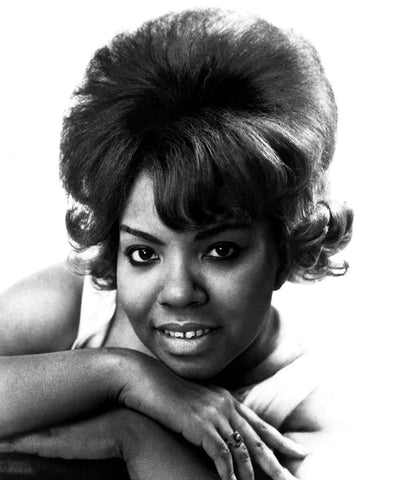\n\nThe songs sung by **Mary Wells** in the early '60s are much-loved and recognizable the world over. She grew up in poverty in Detroit with some major health issues. In fact, she took to singing to ease her problems. After singing in choirs she approached Motown as a wanna-be songwriter and Berry Gordy auditioned her as a singer, with her first record being Wells' self-penned hit \"Bye Bye Baby\" hitting the charts in 1960. Her first album came out in '61.\n\nShe was an early star on the growing Motown family of labels, singing hits like \"My Guy\", \"You Beat Me To The Punch\", \"Two Lovers\" and \"The One Who Really Loves You\", all credited to the pen of Smokey Robinson, whom she collaborated with from '62-64. She cut an album of duets with Marvin Gaye and toured with the Beatles before she left the label in '64. She battled Gordy in court over royalties and won before signing to 20th Century Fox in '65.\n\nHealth issues, combined with Motown strong-arming stations to NOT play her new records contributed to poor sales and a waning star. Minimal chart action with ATCO, Jubilee and Reprise led to retirement in '74. She did manage a comeback with the disco tune \"Gigolo\" but not much after.\n\nDiagnosed with cancer in 1990 and broke from its costs, she sued Motown again over unpaid royalties and they settled out of court. Too little too late, she passed away in '92 at the age of 49. The bulk of her success came in a short two-year span but those songs stand as classic hits that helped Motown build its empire. Too bad they fucked her over.",
"filePath": "content/posts/mary-wells-may-13-1943-july-26-1992.md",
"digest": "876dbb6805d21c4a",
"rendered": {
"html": "<p><img src=\"/images/mary-wells-1943-1992-american-rb-everett_large.jpg\" alt=\"\"></p>\n<p>The songs sung by <strong>Mary Wells</strong> in the early ’60s are much-loved and recognizable the world over. She grew up in poverty in Detroit with some major health issues. In fact, she took to singing to ease her problems. After singing in choirs she approached Motown as a wanna-be songwriter and Berry Gordy auditioned her as a singer, with her first record being Wells’ self-penned hit “Bye Bye Baby” hitting the charts in 1960. Her first album came out in ‘61.</p>\n<p>She was an early star on the growing Motown family of labels, singing hits like “My Guy”, “You Beat Me To The Punch”, “Two Lovers” and “The One Who Really Loves You”, all credited to the pen of Smokey Robinson, whom she collaborated with from ‘62-64. She cut an album of duets with Marvin Gaye and toured with the Beatles before she left the label in ‘64. She battled Gordy in court over royalties and won before signing to 20th Century Fox in ‘65.</p>\n<p>Health issues, combined with Motown strong-arming stations to NOT play her new records contributed to poor sales and a waning star. Minimal chart action with ATCO, Jubilee and Reprise led to retirement in ‘74. She did manage a comeback with the disco tune “Gigolo” but not much after.</p>\n<p>Diagnosed with cancer in 1990 and broke from its costs, she sued Motown again over unpaid royalties and they settled out of court. Too little too late, she passed away in ‘92 at the age of 49. The bulk of her success came in a short two-year span but those songs stand as classic hits that helped Motown build its empire. Too bad they fucked her over.</p>",
"metadata": {
"headings": [],
"localImagePaths": [],
"remoteImagePaths": [],
"frontmatter": {
"web-scraper-order": "1746561663-290",
"web-scraper-start-url": "https://peaceandrhythm.com",
"title": "Mary Wells / May 13, 1943 - July 26, 1992",
"pagination": "https://www.peaceandrhythm.com/?page=54",
"date": "May 13, 2017",
"post": "Mary Wells / May 13, 1943 - July 26, 1992",
"post-href": "https://www.peaceandrhythm.com/blogs/news/mary-wells-may-13-1943-july-26-1992",
"slug": "mary-wells-may-13-1943-july-26-1992"
},
"imagePaths": []
}
},
"collection": "blog"
},
{
"id": "richie-valens-may-13-1941-feb-3-1959",
"data": {
"title": "Richie Valens / May 13, 1941 - Feb 3, 1959",
"slug": "richie-valens-may-13-1941-feb-3-1959",
"date": "2017-05-13T00:00:00.000Z"
},
"body": "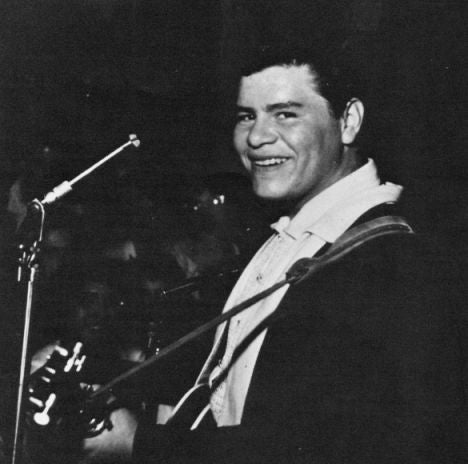\n\nThe first popular Chicano rocker was Richard Valenzuela aka **Richie Valens**. Coming from LA, he was influenced by Little Richard, mariachi, jump blues, flamenco and rockabilly. Airplane disaster first effected him when in his schoolyard he witnessed two planes crashing into each other, killing several schoolmates. A fear of flying had to be overcome to maintain his gig schedule.\n\nHe was a natural left-hander that played guitar right-handed. He started the rock-en-Español movement with his 1958 hit \"La Bamba\". His other big hits were \"Donna\" and \"Come On, Let's Go\" (his tunes were cut with musicians who would later be dubbed the Wrecking Crew). He did concerts with all the biggest rock & rollers of the day: Chuck Berry, Paul Anka, Jackie Wilson, Everly Brothers, Bo Diddley, Duane Eddy, Eddie Cochran, Buddy Holly, Dion, Big Bopper.\n\nHis final, fateful tour found him having to sit in on drums with Dion. He won a coin toss to fly in the plane on a cold night and he, Holly, the Bopper, and the pilot were all killed. Eight months of superstardom came to a crash at the age of just 17.",
"filePath": "content/posts/richie-valens-may-13-1941-feb-3-1959.md",
"digest": "f86346a1db8cc6bf",
"rendered": {
"html": "<p><img src=\"/images/Ritchie_Valens_04_large.jpg\" alt=\"\"></p>\n<p>The first popular Chicano rocker was Richard Valenzuela aka <strong>Richie Valens</strong>. Coming from LA, he was influenced by Little Richard, mariachi, jump blues, flamenco and rockabilly. Airplane disaster first effected him when in his schoolyard he witnessed two planes crashing into each other, killing several schoolmates. A fear of flying had to be overcome to maintain his gig schedule.</p>\n<p>He was a natural left-hander that played guitar right-handed. He started the rock-en-Español movement with his 1958 hit “La Bamba”. His other big hits were “Donna” and “Come On, Let’s Go” (his tunes were cut with musicians who would later be dubbed the Wrecking Crew). He did concerts with all the biggest rock & rollers of the day: Chuck Berry, Paul Anka, Jackie Wilson, Everly Brothers, Bo Diddley, Duane Eddy, Eddie Cochran, Buddy Holly, Dion, Big Bopper.</p>\n<p>His final, fateful tour found him having to sit in on drums with Dion. He won a coin toss to fly in the plane on a cold night and he, Holly, the Bopper, and the pilot were all killed. Eight months of superstardom came to a crash at the age of just 17.</p>",
"metadata": {
"headings": [],
"localImagePaths": [],
"remoteImagePaths": [],
"frontmatter": {
"web-scraper-order": "1746561661-289",
"web-scraper-start-url": "https://peaceandrhythm.com",
"title": "Richie Valens / May 13, 1941 - Feb 3, 1959",
"pagination": "https://www.peaceandrhythm.com/?page=54",
"date": "May 13, 2017",
"post": "Richie Valens / May 13, 1941 - Feb 3, 1959",
"post-href": "https://www.peaceandrhythm.com/blogs/news/richie-valens-may-13-1941-feb-3-1959",
"slug": "richie-valens-may-13-1941-feb-3-1959"
},
"imagePaths": []
}
},
"collection": "blog"
},
{
"id": "ian-dury-may-12-1942-march-27-2000",
"data": {
"title": "Ian Dury / May 12, 1942 - March 27, 2000",
"slug": "ian-dury-may-12-1942-march-27-2000",
"date": "2017-05-12T00:00:00.000Z"
},
"body": "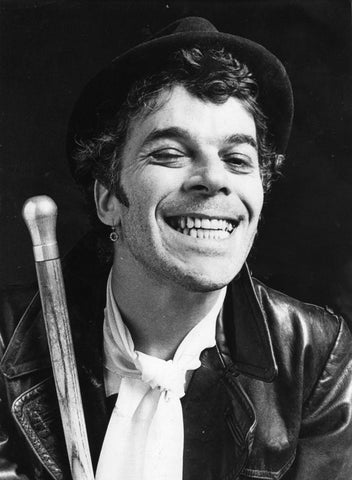\n\nCockney-accented singer/songwriter/actor **Ian Dury** was a great punk poet, talented lyricist and cult hero. After getting polio at 8, he went to a school for the disabled that \"toughened\" him up. Indeed he strutted the stage with confidence, despite the handicap.\n\nHis first band was Kilburn and the High Roads, who toured with The Who and broke up in '75. His next band was the entertaining music-hall spirited Ian Dury & the Blockheads and they had some lasting hits (mostly in the UK) of the new wave era. Their music was influenced by funk, reggae, disco and jazz and Dury supplied some humorous & poetic lyrics, character sketches and left-field observations. They had some classics such as the Ornette Coleman-inspired \"Sex & Drugs & Rock & Roll\", \"Reasons To Be Cheerful, Part 3\", \"Hit Me With Your Rhythm Stick\", \"Superman's Big Sister\" and others on Stiff Records. The band toured with Don Cherry as a guest at times.\n\nHis controversial, post-Blockheads, 1981 song \"Spasticus Autisticus\" was another classic. The lyrics ridicule charities set up in the name of the disabled. The song was banned by the BBC as having \"offensive\" lyrics, despite the brilliant wordplay by Dury, himself disabled. Personally, I hear compassion in the lyrics but what the fuck do I know? (The song later became a theme for the Paralympics).\n\nHe worked with Sly & Robbie, Roger Daltrey, Madness and others. He also did a lot of acting, working with/for Roman Polanski, Peter Greenaway, Sylvester Stallone, Alejandro Jodorowsky, Bob Dylan and Tom Waits, among others. Later years found him active for polio causes and AIDS awareness. He died of cancer in 2000 and a biopic of his life has since been released to much acclaim.\n\nDon Cherry on trumpet:",
"filePath": "content/posts/ian-dury-may-12-1942-march-27-2000.md",
"digest": "2247fac64a0690d2",
"rendered": {
"html": "<p><img src=\"/images/36f3b8fb235312dbfaa0c5faa067bbb9_large.jpg\" alt=\"\"></p>\n<p>Cockney-accented singer/songwriter/actor <strong>Ian Dury</strong> was a great punk poet, talented lyricist and cult hero. After getting polio at 8, he went to a school for the disabled that “toughened” him up. Indeed he strutted the stage with confidence, despite the handicap.</p>\n<p>His first band was Kilburn and the High Roads, who toured with The Who and broke up in ‘75. His next band was the entertaining music-hall spirited Ian Dury & the Blockheads and they had some lasting hits (mostly in the UK) of the new wave era. Their music was influenced by funk, reggae, disco and jazz and Dury supplied some humorous & poetic lyrics, character sketches and left-field observations. They had some classics such as the Ornette Coleman-inspired “Sex & Drugs & Rock & Roll”, “Reasons To Be Cheerful, Part 3”, “Hit Me With Your Rhythm Stick”, “Superman’s Big Sister” and others on Stiff Records. The band toured with Don Cherry as a guest at times.</p>\n<p>His controversial, post-Blockheads, 1981 song “Spasticus Autisticus” was another classic. The lyrics ridicule charities set up in the name of the disabled. The song was banned by the BBC as having “offensive” lyrics, despite the brilliant wordplay by Dury, himself disabled. Personally, I hear compassion in the lyrics but what the fuck do I know? (The song later became a theme for the Paralympics).</p>\n<p>He worked with Sly & Robbie, Roger Daltrey, Madness and others. He also did a lot of acting, working with/for Roman Polanski, Peter Greenaway, Sylvester Stallone, Alejandro Jodorowsky, Bob Dylan and Tom Waits, among others. Later years found him active for polio causes and AIDS awareness. He died of cancer in 2000 and a biopic of his life has since been released to much acclaim.</p>\n<p>Don Cherry on trumpet:</p>",
"metadata": {
"headings": [],
"localImagePaths": [],
"remoteImagePaths": [],
"frontmatter": {
"web-scraper-order": "1746561654-286",
"web-scraper-start-url": "https://peaceandrhythm.com",
"title": "Ian Dury / May 12, 1942 - March 27, 2000",
"pagination": "https://www.peaceandrhythm.com/?page=55",
"date": "May 12, 2017",
"post": "Ian Dury / May 12, 1942 - March 27, 2000",
"post-href": "https://www.peaceandrhythm.com/blogs/news/ian-dury-may-12-1942-march-27-2000",
"slug": "ian-dury-may-12-1942-march-27-2000"
},
"imagePaths": []
}
},
"collection": "blog"
},
{
"id": "norman-whitfield-may-12-1940-sept-16-2008",
"data": {
"title": "Norman Whitfield / May 12, 1940 - Sept 16, 2008",
"slug": "norman-whitfield-may-12-1940-sept-16-2008",
"date": "2017-05-12T00:00:00.000Z"
},
"body": "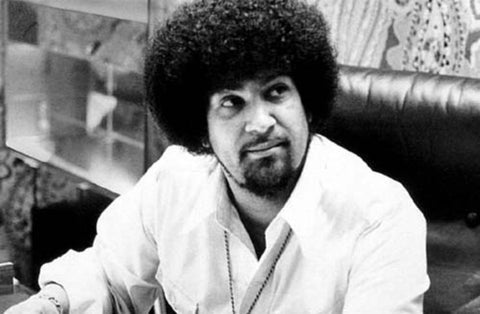\n\nMost people may not know his name but they will know his work. **Norman Whitfield** is one of the most important producers of R&B/funk/disco due to his imaginative work with Motown and his later disco material. He was originally from Harlem but moved to Detroit as a teenager and started hanging around the Motown studios.\n\nAs early as 1963 he was being credited as a songwriter and wrote for Marvin Gaye, The Velvelettes and the Marvelettes (\"Too Many Fish In The Sea\"). His 1966 breakout hit \"Ain't To Proud To Beg\" with The Temptations afforded him the role as their primary director and he went on to produce eight of their LPs. \"I Heard It Through The Grapevine\" (co-written with Barrett Strong) has been a hit several times over with Gaye, Gladys Knight, Creedence Clearwater Revival and others.\n\nStarting around 1968 Whitfield brought an explicit Sly Stone influence into the music and creating \"psychedelic soul\". Indeed, forthcoming productions would show a strong Funkadelic, Jimi Hendrix, funk & rock influence, with topical & anti-war lyrics and some tasty wah-wah guitar from Dennis Coffey. \"Papa Was A Rolling Stone\" is about as fine as an example of how his recipe could make a massively popular tune. Edwin Starr's \"War\" was another great one with long-lasting impact, as well as his personal pet project The Undisputed Truth (\"Smilin' Faces Sometimes\"). His songs got longer and with more studio effects and impressive arrangements. Eventually he broke up with The Temptations due to them getting less say in their presentation.\n\nHe left Motown in '73 to start his own Whitfield Records, taking the Undisputed Truth with him. (Willie Hutch and Junior Walker followed later). He also produced Rose Royce, who found a major hit with _Car Wash_. Whitfield worked on the soundtrack to that movie and others, including working with Stargard. He returned to Motown in the early '80s. In addition to those already mentioned he also produced records by Jackson 5, Rare Earth, The Miracles, The Supremes, David Ruffin, Isley Bros, Mary Wells, Four Tops, Yvonne Fair and the Pointer Sisters. In all he worked on over 100 hit songs.",
"filePath": "content/posts/norman-whitfield-may-12-1940-sept-16-2008.md",
"digest": "e16dfdcfeae1f1a8",
"rendered": {
"html": "<p><img src=\"/images/r293819_1260262_large.jpg\" alt=\"\"></p>\n<p>Most people may not know his name but they will know his work. <strong>Norman Whitfield</strong> is one of the most important producers of R&B/funk/disco due to his imaginative work with Motown and his later disco material. He was originally from Harlem but moved to Detroit as a teenager and started hanging around the Motown studios.</p>\n<p>As early as 1963 he was being credited as a songwriter and wrote for Marvin Gaye, The Velvelettes and the Marvelettes (“Too Many Fish In The Sea”). His 1966 breakout hit “Ain’t To Proud To Beg” with The Temptations afforded him the role as their primary director and he went on to produce eight of their LPs. “I Heard It Through The Grapevine” (co-written with Barrett Strong) has been a hit several times over with Gaye, Gladys Knight, Creedence Clearwater Revival and others.</p>\n<p>Starting around 1968 Whitfield brought an explicit Sly Stone influence into the music and creating “psychedelic soul”. Indeed, forthcoming productions would show a strong Funkadelic, Jimi Hendrix, funk & rock influence, with topical & anti-war lyrics and some tasty wah-wah guitar from Dennis Coffey. “Papa Was A Rolling Stone” is about as fine as an example of how his recipe could make a massively popular tune. Edwin Starr’s “War” was another great one with long-lasting impact, as well as his personal pet project The Undisputed Truth (“Smilin’ Faces Sometimes”). His songs got longer and with more studio effects and impressive arrangements. Eventually he broke up with The Temptations due to them getting less say in their presentation.</p>\n<p>He left Motown in ‘73 to start his own Whitfield Records, taking the Undisputed Truth with him. (Willie Hutch and Junior Walker followed later). He also produced Rose Royce, who found a major hit with <em>Car Wash</em>. Whitfield worked on the soundtrack to that movie and others, including working with Stargard. He returned to Motown in the early ’80s. In addition to those already mentioned he also produced records by Jackson 5, Rare Earth, The Miracles, The Supremes, David Ruffin, Isley Bros, Mary Wells, Four Tops, Yvonne Fair and the Pointer Sisters. In all he worked on over 100 hit songs.</p>",
"metadata": {
"headings": [],
"localImagePaths": [],
"remoteImagePaths": [],
"frontmatter": {
"web-scraper-order": "1746561656-287",
"web-scraper-start-url": "https://peaceandrhythm.com",
"title": "Norman Whitfield / May 12, 1940 - Sept 16, 2008",
"pagination": "https://www.peaceandrhythm.com/?page=55",
"date": "May 12, 2017",
"post": "Norman Whitfield / May 12, 1940 - Sept 16, 2008",
"post-href": "https://www.peaceandrhythm.com/blogs/news/norman-whitfield-may-12-1940-sept-16-2008",
"slug": "norman-whitfield-may-12-1940-sept-16-2008"
},
"imagePaths": []
}
},
"collection": "blog"
},
{
"id": "king-oliver-may-11-1885-april-10-1938",
"data": {
"title": "King Oliver / May 11, 1885 - April 10, 1938",
"slug": "king-oliver-may-11-1885-april-10-1938",
"date": "2017-05-11T00:00:00.000Z"
},
"body": "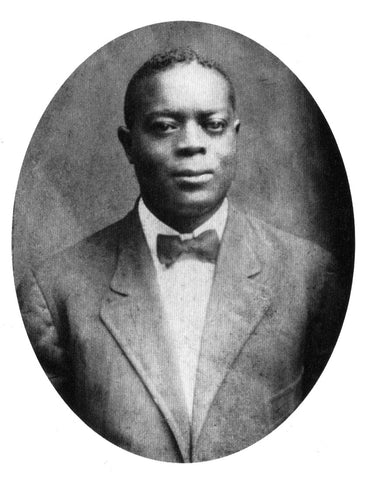\n\nHappy birthday to one of the early influential jazz greats, Joe **\"King\" Oliver**! Old enough to claim Buddy Bolden as an influence, he became one of New Orleans' star cornet & trumpet players (he also had professional experience playing trombone).\n\nDespite having one working eye he learned to read and write music and was also a notable composer. He was mentor and a lifelong friend to Louie Armstrong, whom he taught and helped in New Orleans and later hired in Chicago. From about 1908 or so he was one of the best musicians in NOLA's Storyville district, destroying competitors in fierce trumpet battles left and right. He co-led a band with Kid Ory and his music was so in-demand he was hired across racial and class divides.\n\nA racial incident led him to move to Chicago in 1918 and then he went to California in 1921. While on the West Coast he also performed in duets with Jelly Roll Morton. Upon return to the Windy City he founded the smoking hot septet King Oliver & his Creole Jazz Band (with Louie & Lil Armstrong, Johnny & Baby Dodds) and they cut some well-loved records for several labels. This band is considered one of the great and influential bands of improvisational, polyphonic jazz.\n\nHe went to NYC in '27 and continued until gum disease, bad business dealings (he famously flipped an extremely lucrative Cotton Club gig to an upstart Duke Ellington, a regretful mistake) and the Depression slowed things for him and he retired in '37 and died poor in Savannah GA the next year. His many recordings and steady touring all over the South, East Coast, Midwest and West Coast played a large part in spreading the popularity of jazz in the '10s and '20s.\n\nHe was an early practitioner of using a mute (including plunger, cups and other objects). Considering the fun sounds he could get out of his axe and his tune \"Wa Wa Wa\" one could clearly see what inspiration led to the 1960's invention of the wah-wah pedal. For all that we fortunately have from Oliver to listen to, the early timing of this crucial artist in the history of jazz robbed us of the ability to hear the development of the massively influential Creole Jazz Band. What does exist, though, should be REQUIRED listening in American schools.\n\nFrom 1923, with Louis Armstrong in the band:",
"filePath": "content/posts/king-oliver-may-11-1885-april-10-1938.md",
"digest": "f631e074310bc7e7",
"rendered": {
"html": "<p><img src=\"/images/JoeOliverPortrait_large.jpg\" alt=\"\"></p>\n<p>Happy birthday to one of the early influential jazz greats, Joe <strong>“King” Oliver</strong>! Old enough to claim Buddy Bolden as an influence, he became one of New Orleans’ star cornet & trumpet players (he also had professional experience playing trombone).</p>\n<p>Despite having one working eye he learned to read and write music and was also a notable composer. He was mentor and a lifelong friend to Louie Armstrong, whom he taught and helped in New Orleans and later hired in Chicago. From about 1908 or so he was one of the best musicians in NOLA’s Storyville district, destroying competitors in fierce trumpet battles left and right. He co-led a band with Kid Ory and his music was so in-demand he was hired across racial and class divides.</p>\n<p>A racial incident led him to move to Chicago in 1918 and then he went to California in 1921. While on the West Coast he also performed in duets with Jelly Roll Morton. Upon return to the Windy City he founded the smoking hot septet King Oliver & his Creole Jazz Band (with Louie & Lil Armstrong, Johnny & Baby Dodds) and they cut some well-loved records for several labels. This band is considered one of the great and influential bands of improvisational, polyphonic jazz.</p>\n<p>He went to NYC in ‘27 and continued until gum disease, bad business dealings (he famously flipped an extremely lucrative Cotton Club gig to an upstart Duke Ellington, a regretful mistake) and the Depression slowed things for him and he retired in ‘37 and died poor in Savannah GA the next year. His many recordings and steady touring all over the South, East Coast, Midwest and West Coast played a large part in spreading the popularity of jazz in the ’10s and ’20s.</p>\n<p>He was an early practitioner of using a mute (including plunger, cups and other objects). Considering the fun sounds he could get out of his axe and his tune “Wa Wa Wa” one could clearly see what inspiration led to the 1960’s invention of the wah-wah pedal. For all that we fortunately have from Oliver to listen to, the early timing of this crucial artist in the history of jazz robbed us of the ability to hear the development of the massively influential Creole Jazz Band. What does exist, though, should be REQUIRED listening in American schools.</p>\n<p>From 1923, with Louis Armstrong in the band:</p>",
"metadata": {
"headings": [],
"localImagePaths": [],
"remoteImagePaths": [],
"frontmatter": {
"web-scraper-order": "1746561649-284",
"web-scraper-start-url": "https://peaceandrhythm.com",
"title": "King Oliver / May 11, 1885 - April 10, 1938",
"pagination": "https://www.peaceandrhythm.com/?page=55",
"date": "May 11, 2017",
"post": "King Oliver / May 11, 1885 - April 10, 1938",
"post-href": "https://www.peaceandrhythm.com/blogs/news/king-oliver-may-11-1885-april-10-1938",
"slug": "king-oliver-may-11-1885-april-10-1938"
},
"imagePaths": []
}
},
"collection": "blog"
},
{
"id": "lazaro-ros-may-11-1925-feb-8-2005",
"data": {
"title": "Lázaro Ros / May 11, 1925 - Feb 8, 2005",
"slug": "lazaro-ros-may-11-1925-feb-8-2005",
"date": "2017-05-11T00:00:00.000Z"
},
"body": "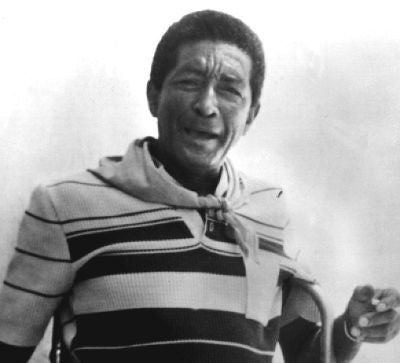\n\nAn important voice in Cuba, **Lázaro Ros** is virtually unknown outside of Yoruba-oriented circles. One of Cuba's major Akpwons (praise singer), he was a Lucumí folkloricist and mentor to young singers & scholars serious about Santeria.\n\nHavana born, started singing at festivals at 13 and was singing on the radio by '49, around which time he was initiated. The new government formed the cultural/musical entity Conjunto Folklórico Nacional de Cuba and with this program Ros got to record and tour Europe, Mexico and the USA. In the '80s he lent his powerful voice, deep knowledge and blessing to a project with the popular Cuban band Síntesis and collaborated on the _Ancestros_ album, bringing heavy Afro-Cuban vibes into rock/pop. He also collaborated with the US-born Cuban-based guitarist Pablo Menendez & his group Mezcla (indeed, it was Menendez himself who first turned me onto Ros). He has also worked with Olorun, Haila Mompie, Giovanni Imparato, Lucia Hergo and John Santos, as well as with the National Ballet of Cuba. He won major awards in Cuba and is recognized as an icon.\n\n_Omi tutu, onã tutu, ashé tutu, tutu ilê, tutu laroye, tutu ariku babawa_",
"filePath": "content/posts/lazaro-ros-may-11-1925-feb-8-2005.md",
"digest": "691cd3c07d25dce4",
"rendered": {
"html": "<p><img src=\"/images/MI0001325910_large.jpg\" alt=\"\"></p>\n<p>An important voice in Cuba, <strong>Lázaro Ros</strong> is virtually unknown outside of Yoruba-oriented circles. One of Cuba’s major Akpwons (praise singer), he was a Lucumí folkloricist and mentor to young singers & scholars serious about Santeria.</p>\n<p>Havana born, started singing at festivals at 13 and was singing on the radio by ‘49, around which time he was initiated. The new government formed the cultural/musical entity Conjunto Folklórico Nacional de Cuba and with this program Ros got to record and tour Europe, Mexico and the USA. In the ’80s he lent his powerful voice, deep knowledge and blessing to a project with the popular Cuban band Síntesis and collaborated on the <em>Ancestros</em> album, bringing heavy Afro-Cuban vibes into rock/pop. He also collaborated with the US-born Cuban-based guitarist Pablo Menendez & his group Mezcla (indeed, it was Menendez himself who first turned me onto Ros). He has also worked with Olorun, Haila Mompie, Giovanni Imparato, Lucia Hergo and John Santos, as well as with the National Ballet of Cuba. He won major awards in Cuba and is recognized as an icon.</p>\n<p><em>Omi tutu, onã tutu, ashé tutu, tutu ilê, tutu laroye, tutu ariku babawa</em></p>",
"metadata": {
"headings": [],
"localImagePaths": [],
"remoteImagePaths": [],
"frontmatter": {
"web-scraper-order": "1746561651-285",
"web-scraper-start-url": "https://peaceandrhythm.com",
"title": "Lázaro Ros / May 11, 1925 - Feb 8, 2005",
"pagination": "https://www.peaceandrhythm.com/?page=55",
"date": "May 11, 2017",
"post": "Lázaro Ros / May 11, 1925 - Feb 8, 2005",
"post-href": "https://www.peaceandrhythm.com/blogs/news/lazaro-ros-may-11-1925-feb-8-2005",
"slug": "lazaro-ros-may-11-1925-feb-8-2005"
},
"imagePaths": []
}
},
"collection": "blog"
},
{
"id": "jayne-cortez-may-10-1934-dec-28-2012",
"data": {
"title": "Jayne Cortez / May 10, 1934 - Dec 28, 2012",
"slug": "jayne-cortez-may-10-1934-dec-28-2012",
"date": "2017-05-10T00:00:00.000Z"
},
"body": "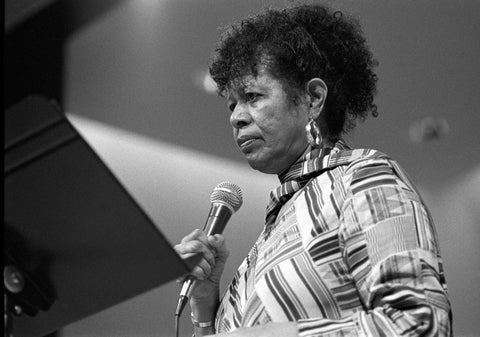\n\nHappy birthday to the award-winning poet & spoken word performer **Jayne Cortez**. Her rhythmic and (anti)militant ways with words are captivating and inspiring. I see her as part of the take-no-shit, fire-as-spit population of radical and rhythmic poets of deep articulation like Amiri Baraka, Gil Scott-Heron, Nikki Giovanni, Last Poets, Suheir Hammad, Chuck D, Welfare Poets and others aligned with social justice, black power and fearless expression.\n\nShe has written several books and made a bunch of records with funk & free-jazz musical backing, often times with Denardo Coleman (her son with Ornette Coleman) and associates called the Firespitters. She founded her own publishing company & record label Bola Press in the '70s and shone light on the positives (music, culture and empowerment) and criticized the negatives (US aggression, homophobia and sexism). She has performed and presented all over the world, was a founder of the Organization of Woman Writers of Africa (OWWA) and lived many years in Dakar, Senegal.",
"filePath": "content/posts/jayne-cortez-may-10-1934-dec-28-2012.md",
"digest": "2126321c1a1b9d2f",
"rendered": {
"html": "<p><img src=\"/images/CORTEZ-obit-superJumbo_large.jpg\" alt=\"\"></p>\n<p>Happy birthday to the award-winning poet & spoken word performer <strong>Jayne Cortez</strong>. Her rhythmic and (anti)militant ways with words are captivating and inspiring. I see her as part of the take-no-shit, fire-as-spit population of radical and rhythmic poets of deep articulation like Amiri Baraka, Gil Scott-Heron, Nikki Giovanni, Last Poets, Suheir Hammad, Chuck D, Welfare Poets and others aligned with social justice, black power and fearless expression.</p>\n<p>She has written several books and made a bunch of records with funk & free-jazz musical backing, often times with Denardo Coleman (her son with Ornette Coleman) and associates called the Firespitters. She founded her own publishing company & record label Bola Press in the ’70s and shone light on the positives (music, culture and empowerment) and criticized the negatives (US aggression, homophobia and sexism). She has performed and presented all over the world, was a founder of the Organization of Woman Writers of Africa (OWWA) and lived many years in Dakar, Senegal.</p>",
"metadata": {
"headings": [],
"localImagePaths": [],
"remoteImagePaths": [],
"frontmatter": {
"web-scraper-order": "1746561647-283",
"web-scraper-start-url": "https://peaceandrhythm.com",
"title": "Jayne Cortez / May 10, 1934 - Dec 28, 2012",
"pagination": "https://www.peaceandrhythm.com/?page=56",
"date": "May 10, 2017",
"post": "Jayne Cortez / May 10, 1934 - Dec 28, 2012",
"post-href": "https://www.peaceandrhythm.com/blogs/news/jayne-cortez-may-10-1934-dec-28-2012",
"slug": "jayne-cortez-may-10-1934-dec-28-2012"
},
"imagePaths": []
}
},
"collection": "blog"
},
{
"id": "dave-prater-may-9-1937-april-9-1988",
"data": {
"title": "Dave Prater / May 9, 1937 - April 9, 1988",
"slug": "dave-prater-may-9-1937-april-9-1988",
"date": "2017-05-09T00:00:00.000Z"
},
"body": "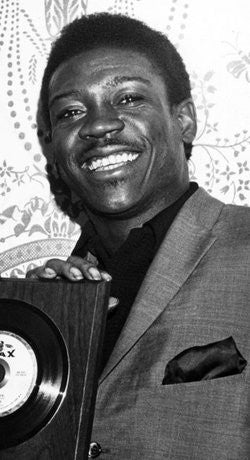\n\nOne half of the greatest soul music singing duo of all time, the Dave of Sam & Dave was the deeper-voiced of the two. **Dave Prater** came from Georgia and sang gospel, both as a child in church and professionally with the Sensational Hummingbirds.\n\nHe hooked up with Sam Moore in '61 and they signed to Roulette, releasing a clutch of tunes often with Dave singing the lead and sometimes composing. In '64 they signed with Atlantic and made their records in Memphis at the famous Stax studio and the house band Booker T & the MG's. For a four-year stretch from '65-68 they made some of the best soul classics ever cut. \"Hold On, I'm Comin\", \"When Something Is Wrong With My Baby\", \"Soul Man\", \"I Thank You\", \"Wrap It Up\"...just classic stuff. Check Dave out leading on \"When Something Is Wrong With My Baby...\"! A lot of these tunes were written by Isaac Hayes and David Porter, but the duo contributed greatly to shaping the style of the compositions.\n\nThey maintained a reputation as one of the hottest stage acts of the period. In 1968 the increasingly corporate Atlantic ripped off Stax and this unfortunate development robbed Sam & Dave of the association they had with the studio in Memphis and thus the magic was lost. Combine that with some tensions between the two and they had a brief break-up in '70.\n\nPrater recorded for Alston and did some touring before they worked together again off-and-on until 1981. They appeared on Jaco Pastorius' first album in '76 and the hit movie and group The Blues Brothers were explicitly based on Sam & Dave. Due to drug problems and personality conflicts Prater got a new Sam in the '80s, much to the chagrin of Sam Moore and that \"new\" duo toured the oldies circuit until Prater's death in a car accident. The classic Stax recordings of Sam & Dave are hard to beat for infectious and energetic soul at its best.",
"filePath": "content/posts/dave-prater-may-9-1937-april-9-1988.md",
"digest": "2df141dd8ddbe6ec",
"rendered": {
"html": "<p><img src=\"/images/7016693_127083753427_large.jpg\" alt=\"\"></p>\n<p>One half of the greatest soul music singing duo of all time, the Dave of Sam & Dave was the deeper-voiced of the two. <strong>Dave Prater</strong> came from Georgia and sang gospel, both as a child in church and professionally with the Sensational Hummingbirds.</p>\n<p>He hooked up with Sam Moore in ‘61 and they signed to Roulette, releasing a clutch of tunes often with Dave singing the lead and sometimes composing. In ‘64 they signed with Atlantic and made their records in Memphis at the famous Stax studio and the house band Booker T & the MG’s. For a four-year stretch from ‘65-68 they made some of the best soul classics ever cut. “Hold On, I’m Comin”, “When Something Is Wrong With My Baby”, “Soul Man”, “I Thank You”, “Wrap It Up”…just classic stuff. Check Dave out leading on “When Something Is Wrong With My Baby…”! A lot of these tunes were written by Isaac Hayes and David Porter, but the duo contributed greatly to shaping the style of the compositions.</p>\n<p>They maintained a reputation as one of the hottest stage acts of the period. In 1968 the increasingly corporate Atlantic ripped off Stax and this unfortunate development robbed Sam & Dave of the association they had with the studio in Memphis and thus the magic was lost. Combine that with some tensions between the two and they had a brief break-up in ‘70.</p>\n<p>Prater recorded for Alston and did some touring before they worked together again off-and-on until 1981. They appeared on Jaco Pastorius’ first album in ‘76 and the hit movie and group The Blues Brothers were explicitly based on Sam & Dave. Due to drug problems and personality conflicts Prater got a new Sam in the ’80s, much to the chagrin of Sam Moore and that “new” duo toured the oldies circuit until Prater’s death in a car accident. The classic Stax recordings of Sam & Dave are hard to beat for infectious and energetic soul at its best.</p>",
"metadata": {
"headings": [],
"localImagePaths": [],
"remoteImagePaths": [],
"frontmatter": {
"web-scraper-order": "1746561645-282",
"web-scraper-start-url": "https://peaceandrhythm.com",
"title": "Dave Prater / May 9, 1937 - April 9, 1988",
"pagination": "https://www.peaceandrhythm.com/?page=56",
"date": "May 09, 2017",
"post": "Dave Prater / May 9, 1937 - April 9, 1988",
"post-href": "https://www.peaceandrhythm.com/blogs/news/dave-prater-may-9-1937-april-9-1988",
"slug": "dave-prater-may-9-1937-april-9-1988"
},
"imagePaths": []
}
},
"collection": "blog"
},
{
"id": "cheikha-rimitti-may-8-1923-may-15-2006",
"data": {
"title": "Cheikha Rimitti / May 8, 1923 - May 15, 2006",
"slug": "cheikha-rimitti-may-8-1923-may-15-2006",
"date": "2017-05-08T00:00:00.000Z"
},
"body": "**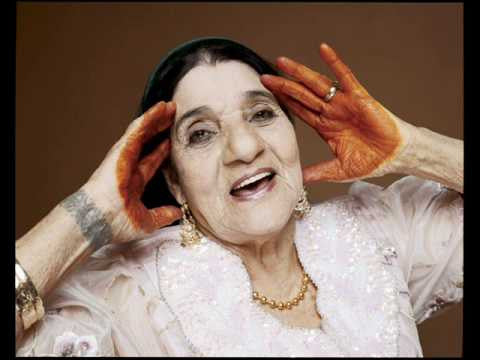**\n\n**Cheikha Rimitti** was a pioneering female raï singer in Algeria and beyond. She grew up in poverty before joining a song & dance troupe in the late '30s. She broke custom in the early '40s by singing about sex and booze in a deeply taboo environment in Algeria, using filthy slang and a deeper (\"unfemale\"?) voice in the process.\n\nIn 1954 she encouraged young women to lose their virginity, causing a major scandal (\"Charrak Gattà\", a record still suppressed to this day). This found her banned in her homeland and she took to working in France and elsewhere, staying largely out of Algeria. Her popularity increased in her homeland and beyond when up-and-coming young Algerian raï stars paid tribute to her, including Khaled and Rachid Taha.\n\nShe collaborated with Flea and Robert Fripp in '94 on a groundbreaking electro-raï album (_Sidi Mansour_ , as well as its companion EP _Cheikha_) and has been called the Grandmother of Algerian raï. She spent her lifetime illiterate, yet she composed over 200 songs and has nearly 800 albums.",
"filePath": "content/posts/cheikha-rimitti-may-8-1923-may-15-2006.md",
"digest": "3a65e0d7b104fac1",
"rendered": {
"html": "<p><strong><img src=\"/images/hqdefault_d45300a8-f98c-4b75-88c0-7e0217a35759_large.jpg\" alt=\"\"></strong></p>\n<p><strong>Cheikha Rimitti</strong> was a pioneering female raï singer in Algeria and beyond. She grew up in poverty before joining a song & dance troupe in the late ’30s. She broke custom in the early ’40s by singing about sex and booze in a deeply taboo environment in Algeria, using filthy slang and a deeper (“unfemale”?) voice in the process.</p>\n<p>In 1954 she encouraged young women to lose their virginity, causing a major scandal (“Charrak Gattà”, a record still suppressed to this day). This found her banned in her homeland and she took to working in France and elsewhere, staying largely out of Algeria. Her popularity increased in her homeland and beyond when up-and-coming young Algerian raï stars paid tribute to her, including Khaled and Rachid Taha.</p>\n<p>She collaborated with Flea and Robert Fripp in ‘94 on a groundbreaking electro-raï album (<em>Sidi Mansour</em> , as well as its companion EP <em>Cheikha</em>) and has been called the Grandmother of Algerian raï. She spent her lifetime illiterate, yet she composed over 200 songs and has nearly 800 albums.</p>",
"metadata": {
"headings": [],
"localImagePaths": [],
"remoteImagePaths": [],
"frontmatter": {
"web-scraper-order": "1746561638-279",
"web-scraper-start-url": "https://peaceandrhythm.com",
"title": "Cheikha Rimitti / May 8, 1923 - May 15, 2006",
"pagination": "https://www.peaceandrhythm.com/?page=56",
"date": "May 08, 2017",
"post": "Cheikha Rimitti / May 8, 1923 - May 15, 2006",
"post-href": "https://www.peaceandrhythm.com/blogs/news/cheikha-rimitti-may-8-1923-may-15-2006",
"slug": "cheikha-rimitti-may-8-1923-may-15-2006"
},
"imagePaths": []
}
},
"collection": "blog"
},
{
"id": "mary-lou-williams-may-8-1910-may-28-1981",
"data": {
"title": "Mary Lou Williams / May 8, 1910 - May 28, 1981",
"slug": "mary-lou-williams-may-8-1910-may-28-1981",
"date": "2017-05-08T00:00:00.000Z"
},
"body": "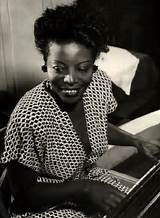\n\nShe was the lady who swings the band. **Mary Lou Williams** may be not be considered a major jazz star but her contributions as a pianist, arranger, composer, teacher, radio host and historian are immense.\n\nShe has been a professional since she was a little girl in Pittsburgh and was playing with Duke Ellington's Washingtonians at 13. She married saxophonist John Williams in 1927 and formed a band with him in Memphis before they both joined Andy Kirk's Twelve Clouds of Joy in Oklahoma City in '29, with whom Mary Lou made her first recordings as the band's pianist, composer and arranger, effectively running the band.\n\nShe started performing and recording solo piano in the early '30s, as well as arranging for the bands of Earl \"Fatha\" Hines, Benny Goodman, Jimmy Lunceford, Louis Armstrong, Cab Calloway and Tommy Dorsey. She spent some of the '30s jamming in the historic Kansas City scene with Ben Webster, Charlie Parker, Lester Young and others. (Geri Allen played her in the Robert Altman movie _Kansas City_).\n\nIn '42 she was back in Pittsburgh in a band with her second husband Shorty Baker and Art Blakey before she took off to go East with the Ellington organization. During the bebop era she was in NYC, recently divorced, and jamming with (and mentoring) Bird, Thelonious Monk, Dizzy Gillespie, Miles Davis, Tadd Dameron and others. She started hosting a weekly radio show, playing solo gigs and writing for the Gillespie band. She also saw her large scale orchestral work _Zodiac Suite_ hit the stage in 1945.\n\nShe was in Europe and then semi-retirement in the '50s until she rejoined the Gillespie band at the '57 Newport Fest. Her career in the '60s found her music exploring deeply spiritual themes (often with dancers) while she also formed her own publishing company and record label. She helped found the Pittsburgh Jazz Festival and made some TV appearances.\n\nIn '77 she recorded a duo concert with Cecil Taylor followed by appearances at the White House and Carnegie Hall. She also spent several years teaching at universities and with youth choirs. This pioneering woman of jazz lost a battle with cancer in 1981. Her music covered boogie-woogie, swing, bebop, modal and gospel and her activism was an essential part of her story.\n\nSaid Duke Ellington: \"Mary Lou Williams is perpetually contemporary. Her writing and performing have always been a little ahead throughout her career. Her music retains, and maintains, a standard of quality that is timeless. She is like soul on soul.\"",
"filePath": "content/posts/mary-lou-williams-may-8-1910-may-28-1981.md",
"digest": "7f3335031dd9326e",
"rendered": {
"html": "<p><img src=\"/images/th_14ad831d-0473-40c0-922a-336e28193df6_large.jpg\" alt=\"\"></p>\n<p>She was the lady who swings the band. <strong>Mary Lou Williams</strong> may be not be considered a major jazz star but her contributions as a pianist, arranger, composer, teacher, radio host and historian are immense.</p>\n<p>She has been a professional since she was a little girl in Pittsburgh and was playing with Duke Ellington’s Washingtonians at 13. She married saxophonist John Williams in 1927 and formed a band with him in Memphis before they both joined Andy Kirk’s Twelve Clouds of Joy in Oklahoma City in ‘29, with whom Mary Lou made her first recordings as the band’s pianist, composer and arranger, effectively running the band.</p>\n<p>She started performing and recording solo piano in the early ’30s, as well as arranging for the bands of Earl “Fatha” Hines, Benny Goodman, Jimmy Lunceford, Louis Armstrong, Cab Calloway and Tommy Dorsey. She spent some of the ’30s jamming in the historic Kansas City scene with Ben Webster, Charlie Parker, Lester Young and others. (Geri Allen played her in the Robert Altman movie <em>Kansas City</em>).</p>\n<p>In ‘42 she was back in Pittsburgh in a band with her second husband Shorty Baker and Art Blakey before she took off to go East with the Ellington organization. During the bebop era she was in NYC, recently divorced, and jamming with (and mentoring) Bird, Thelonious Monk, Dizzy Gillespie, Miles Davis, Tadd Dameron and others. She started hosting a weekly radio show, playing solo gigs and writing for the Gillespie band. She also saw her large scale orchestral work <em>Zodiac Suite</em> hit the stage in 1945.</p>\n<p>She was in Europe and then semi-retirement in the ’50s until she rejoined the Gillespie band at the ‘57 Newport Fest. Her career in the ’60s found her music exploring deeply spiritual themes (often with dancers) while she also formed her own publishing company and record label. She helped found the Pittsburgh Jazz Festival and made some TV appearances.</p>\n<p>In ‘77 she recorded a duo concert with Cecil Taylor followed by appearances at the White House and Carnegie Hall. She also spent several years teaching at universities and with youth choirs. This pioneering woman of jazz lost a battle with cancer in 1981. Her music covered boogie-woogie, swing, bebop, modal and gospel and her activism was an essential part of her story.</p>\n<p>Said Duke Ellington: “Mary Lou Williams is perpetually contemporary. Her writing and performing have always been a little ahead throughout her career. Her music retains, and maintains, a standard of quality that is timeless. She is like soul on soul.”</p>",
"metadata": {
"headings": [],
"localImagePaths": [],
"remoteImagePaths": [],
"frontmatter": {
"web-scraper-order": "1746561640-280",
"web-scraper-start-url": "https://peaceandrhythm.com",
"title": "Mary Lou Williams / May 8, 1910 - May 28, 1981",
"pagination": "https://www.peaceandrhythm.com/?page=56",
"date": "May 08, 2017",
"post": "Mary Lou Williams / May 8, 1910 - May 28, 1981",
"post-href": "https://www.peaceandrhythm.com/blogs/news/mary-lou-williams-may-8-1910-may-28-1981",
"slug": "mary-lou-williams-may-8-1910-may-28-1981"
},
"imagePaths": []
}
},
"collection": "blog"
},
{
"id": "robert-johnson-may-8-1911-aug-16-1938",
"data": {
"title": "Robert Johnson / May 8, 1911 - Aug 16, 1938",
"slug": "robert-johnson-may-8-1911-aug-16-1938",
"date": "2017-05-08T00:00:00.000Z"
},
"body": "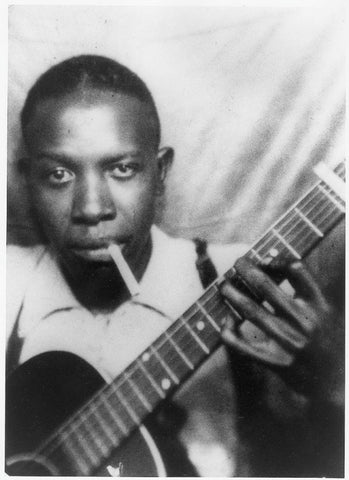\n\nHas there ever been a more mythical musician than blues icon **Robert Johnson**? He reportedly sold his soul to the devil at a crossroads to acquire his prodigious guitar talent. Little by little, blues historians have been trying to fill in the pieces. It seems that he was a gigolo who was not a star as a musician during his lifetime, but a well-traveled man who was respected for his talent wherever he went. He sang and played pop, jazz, blues and country music on street corners and parties (as well as practicing in graveyards at night) and has played all over the South, Midwest and into Texas, Canada and New York.\n\nHe was known to be a nice guy but introverted and married to the road, using different names in different places. He cut his first recordings in San Antonio in 1936. In '37 had a session in Dallas. All of his recordings come from these two occasions and it is quite possible he saw only two of his records released while he was alive. One of these, \"Terraplane Blues\", became a minor hit. There is a lot of speculation as to why he faced the corner of the wall while recording, some say it was due to shyness or shame, others have suggested a sort-of \"slavery\" type atmosphere...but it is quite possible he just wanted to use the corner for purposes of its acoustics for the recording.\n\nHe had traveled a bunch with Johnny Shines and came into contact with Son House, Henry Townsend, Sonnyboy Williamson and Honeyboy Edwards, as well as having a long-term relationship with the mother of bluesman Robert Lockwood Jr. He met his end at the age of 27, having fell ill for three days after being given intentionally-poisoned whiskey at a party for reasons unclear.\n\nAt the end of the day, Johnson shows to be one of the most advanced of all the Delta blues singers, having mastered the guitar in various local blues styles and techniques. His lyrics went deeper with their poetics and his voice was as expressive as anybody's. His lyrics touched on themes that suggest an awareness of African voodoo folk tales (with plenty of sexual content as well) and his pronounced \"one-man-band\" style of call & response with himself further underscores the connection to Africa. He remained an obscure figure in the greater blues world until the early '60s when his music was reissued at a time when the folk revival was happening and young British bluesmen were about to bring rock music into dominance.",
"filePath": "content/posts/robert-johnson-may-8-1911-aug-16-1938.md",
"digest": "f16e091cc436f7bf",
"rendered": {
"html": "<p><img src=\"/images/robert-johnson-photo-2_large.jpg\" alt=\"\"></p>\n<p>Has there ever been a more mythical musician than blues icon <strong>Robert Johnson</strong>? He reportedly sold his soul to the devil at a crossroads to acquire his prodigious guitar talent. Little by little, blues historians have been trying to fill in the pieces. It seems that he was a gigolo who was not a star as a musician during his lifetime, but a well-traveled man who was respected for his talent wherever he went. He sang and played pop, jazz, blues and country music on street corners and parties (as well as practicing in graveyards at night) and has played all over the South, Midwest and into Texas, Canada and New York.</p>\n<p>He was known to be a nice guy but introverted and married to the road, using different names in different places. He cut his first recordings in San Antonio in 1936. In ‘37 had a session in Dallas. All of his recordings come from these two occasions and it is quite possible he saw only two of his records released while he was alive. One of these, “Terraplane Blues”, became a minor hit. There is a lot of speculation as to why he faced the corner of the wall while recording, some say it was due to shyness or shame, others have suggested a sort-of “slavery” type atmosphere…but it is quite possible he just wanted to use the corner for purposes of its acoustics for the recording.</p>\n<p>He had traveled a bunch with Johnny Shines and came into contact with Son House, Henry Townsend, Sonnyboy Williamson and Honeyboy Edwards, as well as having a long-term relationship with the mother of bluesman Robert Lockwood Jr. He met his end at the age of 27, having fell ill for three days after being given intentionally-poisoned whiskey at a party for reasons unclear.</p>\n<p>At the end of the day, Johnson shows to be one of the most advanced of all the Delta blues singers, having mastered the guitar in various local blues styles and techniques. His lyrics went deeper with their poetics and his voice was as expressive as anybody’s. His lyrics touched on themes that suggest an awareness of African voodoo folk tales (with plenty of sexual content as well) and his pronounced “one-man-band” style of call & response with himself further underscores the connection to Africa. He remained an obscure figure in the greater blues world until the early ’60s when his music was reissued at a time when the folk revival was happening and young British bluesmen were about to bring rock music into dominance.</p>",
"metadata": {
"headings": [],
"localImagePaths": [],
"remoteImagePaths": [],
"frontmatter": {
"web-scraper-order": "1746561643-281",
"web-scraper-start-url": "https://peaceandrhythm.com",
"title": "Robert Johnson / May 8, 1911 - Aug 16, 1938",
"pagination": "https://www.peaceandrhythm.com/?page=56",
"date": "May 08, 2017",
"post": "Robert Johnson / May 8, 1911 - Aug 16, 1938",
"post-href": "https://www.peaceandrhythm.com/blogs/news/robert-johnson-may-8-1911-aug-16-1938",
"slug": "robert-johnson-may-8-1911-aug-16-1938"
},
"imagePaths": []
}
},
"collection": "blog"
}
]
Joey Ramone / May 19, 1951 - April 15, 2001
May 19, 2017
Today is the birthday of Jeffrey Hyman aka Joey Ramone , front man of The Ramones and pop-punk idol. He came out of Forest Hills, Queens with his love of '60s rock, girl groups and glam and joined Sniper in the early '70s playing shows with groups like the NY...
Big Joe Turner / May 18, 1911 - Nov 24, 1985
May 18, 2017
The Boss of the Blues, Big Joe Turner was one of the strongest voices one could ever hear. A great blues shouter, he could be heard and felt unamplified over the brass and beat. A Kansas City icon, he got his start as a singing bartender before ripping up that...
Dewey Redman / May 17, 1931 - Sept 2, 2006
May 17, 2017
Great Texan saxophonist Dewey Redman is best known for his work with Ornette Coleman, the great "Birth" band (as I call it, after one of their great records) with Keith Jarrett, Old & New Dreams and his own fine output on Impulse!, Freedom, Actuel, ECM, Black Saint and others. He...
Jackie McLean / May 17, 1931 - March 31, 2006
May 17, 2017
Alto saxophonist, educator and activist Jackie McLean had a long career of quality hard-bop and post-bop jazz. He also played in modal settings and his alto sound could be as commanding as a tenor at times. His run on Prestige and Blue Note in the '50s and '60s is as...
Betty Carter / May 16, 1929 - Sept 26, 1998
May 16, 2017
One of the most inventive vocal stylists in all of jazz, Betty Carter not only brought a gift for radical improvisation, a "breathy" artful style at times and a hip scatting flow, but she also brought an independent spirit with her own Bet-Car record label, where she sold albums direct...
Jack Bruce / May 14, 1943 - Oct 25, 2014
May 14, 2017
Perhaps best known to casuals as the bassist of Cream, the Scottish virtuoso Jack Bruce in fact had a long and varied career that included rock, blues, jazz, classical, third stream, Latin, world music and fusion. He could play electric & upright bass, cello, piano, harmonica and was a singer/songwriter...
Sidney Bechet / May 14, 1897 - May 14, 1959
May 14, 2017
One of the early solo stylists of jazz, Sidney Bechet ripped it up in his native New Orleans, marching in parade bands, playing parties and as clarinetist with the Eagle Band and others before joining King Oliver's band in 1913. That band did some heavy touring, including a residency in...
Chuck Schuldiner / May 13, 1967 - Dec 13, 2001
May 13, 2017
This one is not going to be up the alley of most people but since it's my project to write these little bios of some musical icons I am feeling no shame to include the Father of Death Metal, the late Chuck Schuldiner. While I completely understand that death metal...
Gil Evans / May 13, 1912 - March 20, 1988
May 13, 2017
Canadian pianist, arranger, composer, bandleader, Gil Evans was the first call arranger time and time again with Miles Davis and later developed an obsession with Jimi Hendrix. Born in Toronto but moving around mining towns until the family settled in California, he saw Duke Ellington play in '27 and got...
Mary Wells / May 13, 1943 - July 26, 1992
May 13, 2017
The songs sung by Mary Wells in the early '60s are much-loved and recognizable the world over. She grew up in poverty in Detroit with some major health issues. In fact, she took to singing to ease her problems. After singing in choirs she approached Motown as a wanna-be songwriter...
Richie Valens / May 13, 1941 - Feb 3, 1959
May 13, 2017
The first popular Chicano rocker was Richard Valenzuela aka Richie Valens. Coming from LA, he was influenced by Little Richard, mariachi, jump blues, flamenco and rockabilly. Airplane disaster first effected him when in his schoolyard he witnessed two planes crashing into each other, killing several schoolmates. A fear of flying...
Ian Dury / May 12, 1942 - March 27, 2000
May 12, 2017
Cockney-accented singer/songwriter/actor Ian Dury was a great punk poet, talented lyricist and cult hero. After getting polio at 8, he went to a school for the disabled that "toughened" him up. Indeed he strutted the stage with confidence, despite the handicap. His first band was Kilburn and the High Roads,...
Norman Whitfield / May 12, 1940 - Sept 16, 2008
May 12, 2017
Most people may not know his name but they will know his work. Norman Whitfield is one of the most important producers of R&B/funk/disco due to his imaginative work with Motown and his later disco material. He was originally from Harlem but moved to Detroit as a teenager and started...
King Oliver / May 11, 1885 - April 10, 1938
May 11, 2017
Happy birthday to one of the early influential jazz greats, Joe "King" Oliver! Old enough to claim Buddy Bolden as an influence, he became one of New Orleans' star cornet & trumpet players (he also had professional experience playing trombone). Despite having one working eye he learned to read and...
Lázaro Ros / May 11, 1925 - Feb 8, 2005
May 11, 2017
An important voice in Cuba, Lázaro Ros is virtually unknown outside of Yoruba-oriented circles. One of Cuba's major Akpwons (praise singer), he was a Lucumí folkloricist and mentor to young singers & scholars serious about Santeria. Havana born, started singing at festivals at 13 and was singing on the radio...
Jayne Cortez / May 10, 1934 - Dec 28, 2012
May 10, 2017
Happy birthday to the award-winning poet & spoken word performer Jayne Cortez. Her rhythmic and (anti)militant ways with words are captivating and inspiring. I see her as part of the take-no-shit, fire-as-spit population of radical and rhythmic poets of deep articulation like Amiri Baraka, Gil Scott-Heron, Nikki Giovanni, Last Poets,...
Dave Prater / May 9, 1937 - April 9, 1988
May 9, 2017
One half of the greatest soul music singing duo of all time, the Dave of Sam & Dave was the deeper-voiced of the two. Dave Prater came from Georgia and sang gospel, both as a child in church and professionally with the Sensational Hummingbirds. He hooked up with Sam Moore...
Cheikha Rimitti / May 8, 1923 - May 15, 2006
May 8, 2017
** Cheikha Rimitti was a pioneering female raï singer in Algeria and beyond. She grew up in poverty before joining a song & dance troupe in the late '30s. She broke custom in the early '40s by singing about sex and booze in a deeply taboo environment in Algeria, using...
Mary Lou Williams / May 8, 1910 - May 28, 1981
May 8, 2017
She was the lady who swings the band. Mary Lou Williams may be not be considered a major jazz star but her contributions as a pianist, arranger, composer, teacher, radio host and historian are immense. She has been a professional since she was a little girl in Pittsburgh and was...
Robert Johnson / May 8, 1911 - Aug 16, 1938
May 8, 2017
Has there ever been a more mythical musician than blues icon Robert Johnson? He reportedly sold his soul to the devil at a crossroads to acquire his prodigious guitar talent. Little by little, blues historians have been trying to fill in the pieces. It seems that he was a gigolo...
